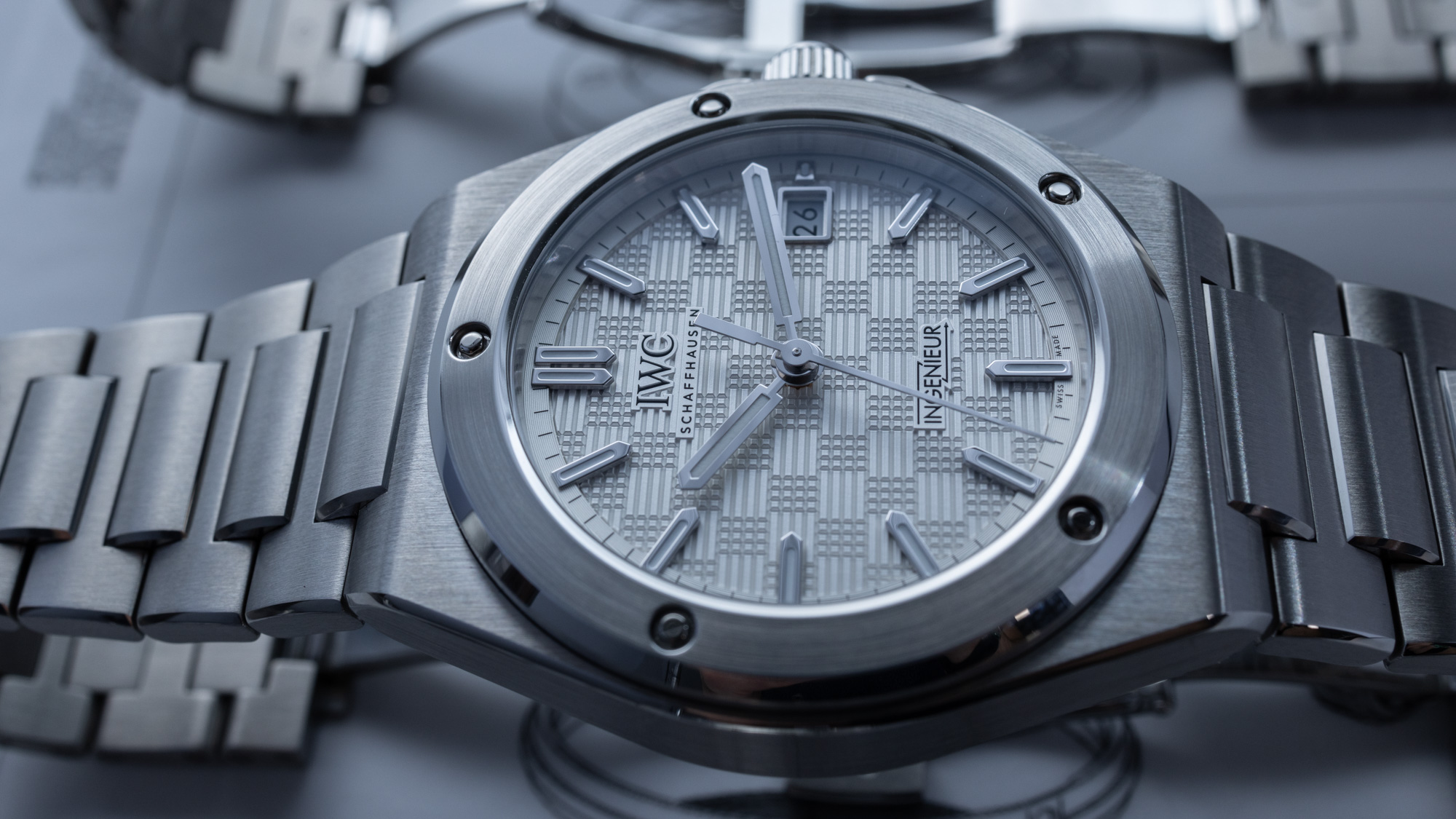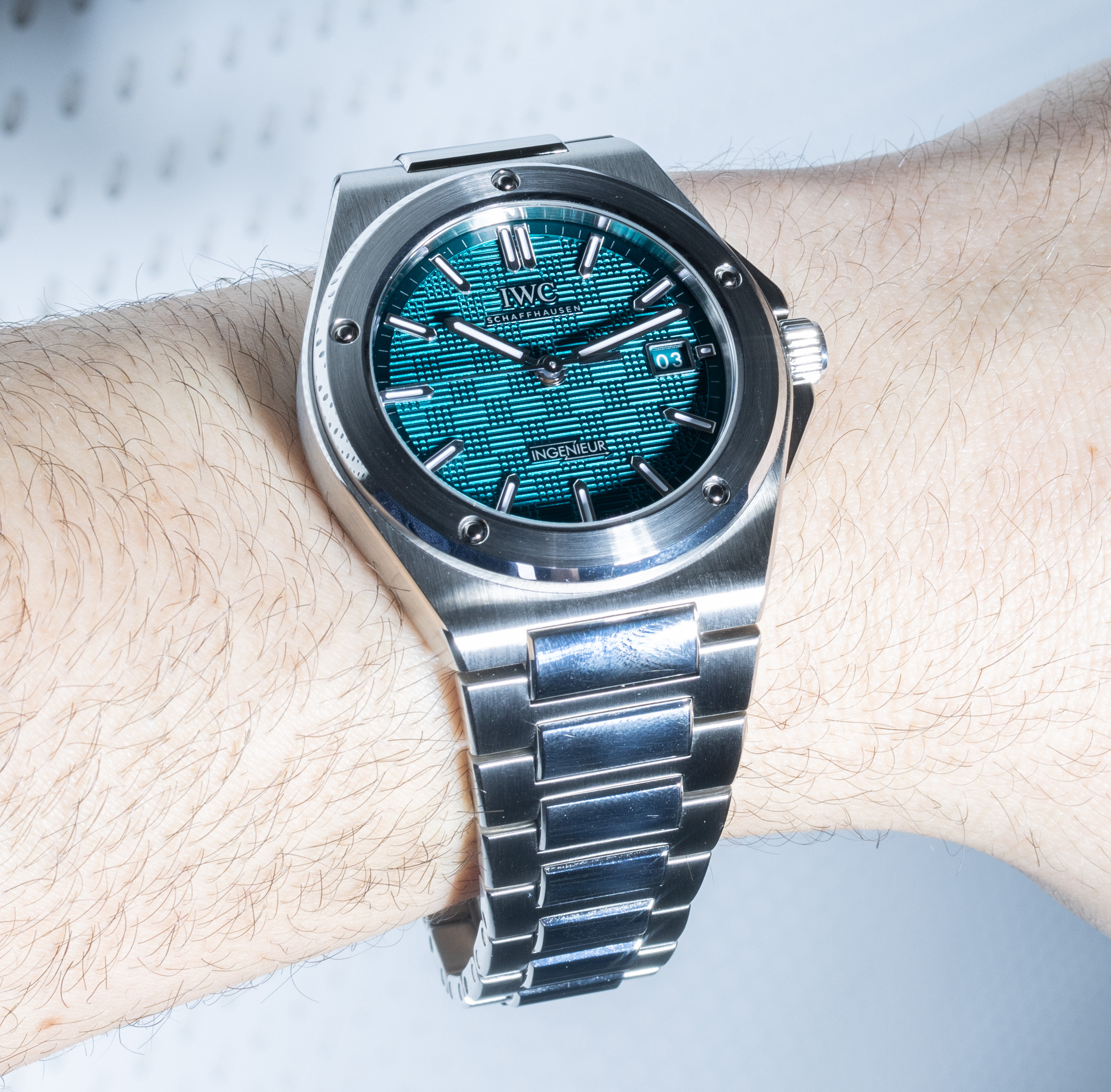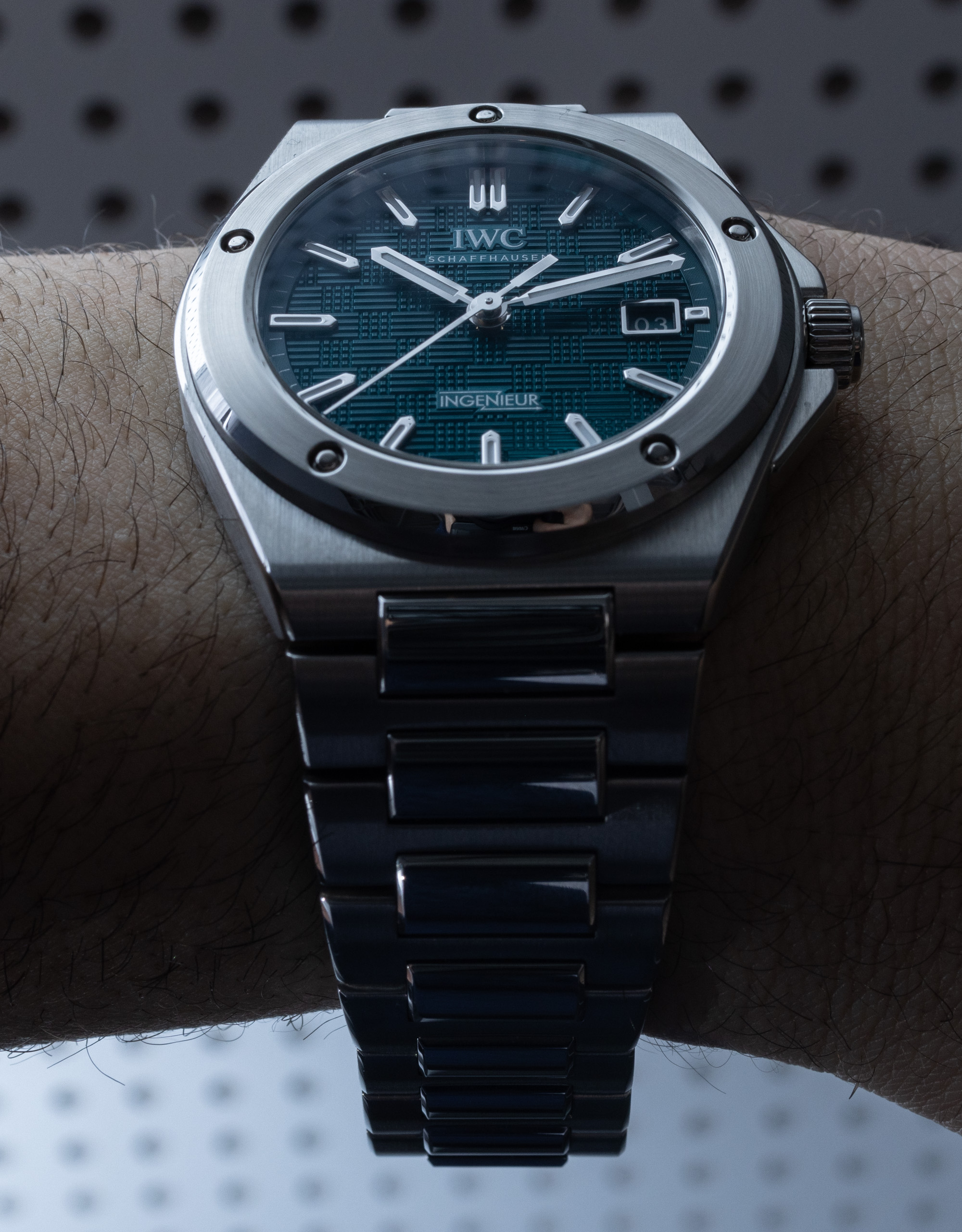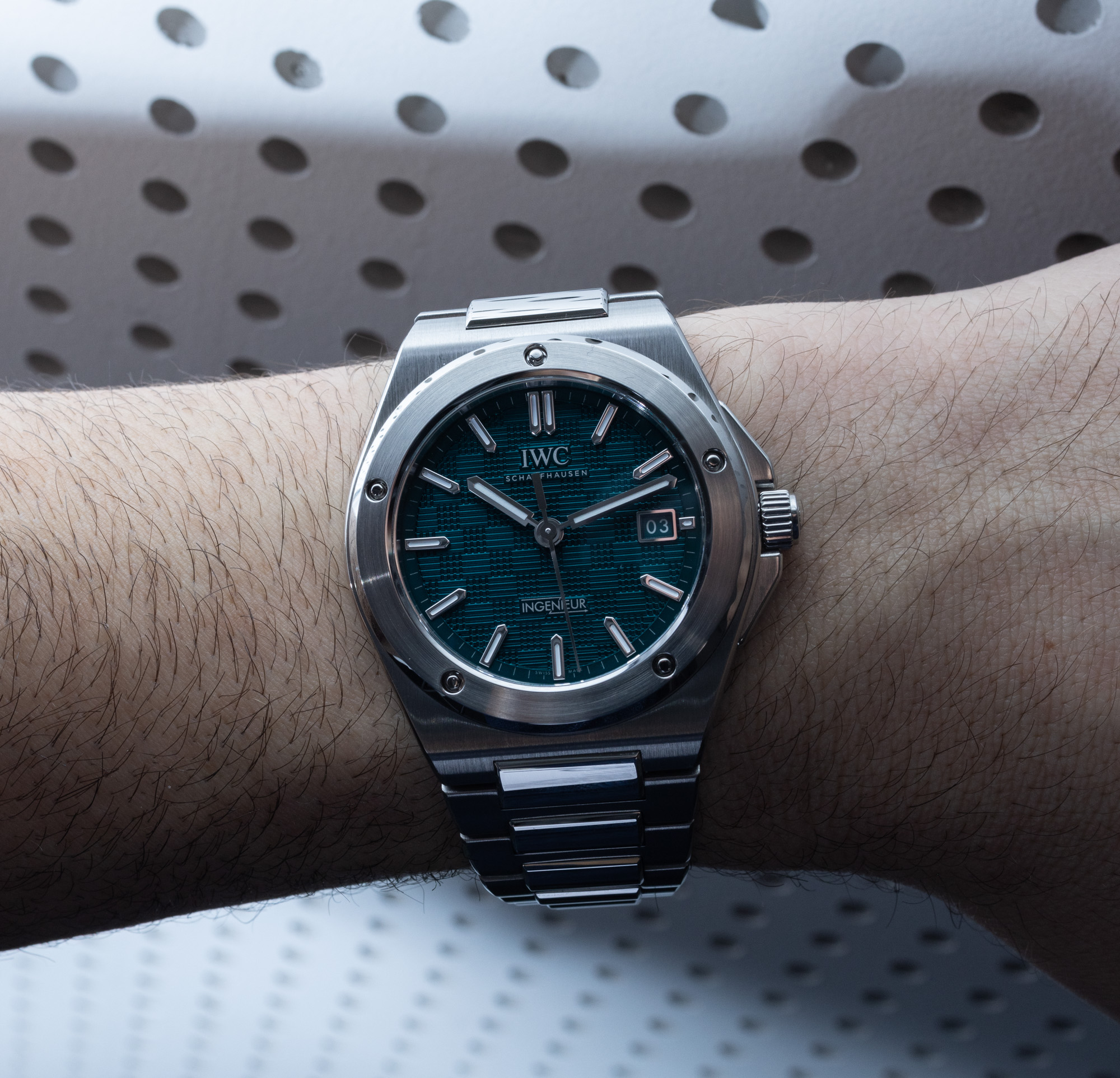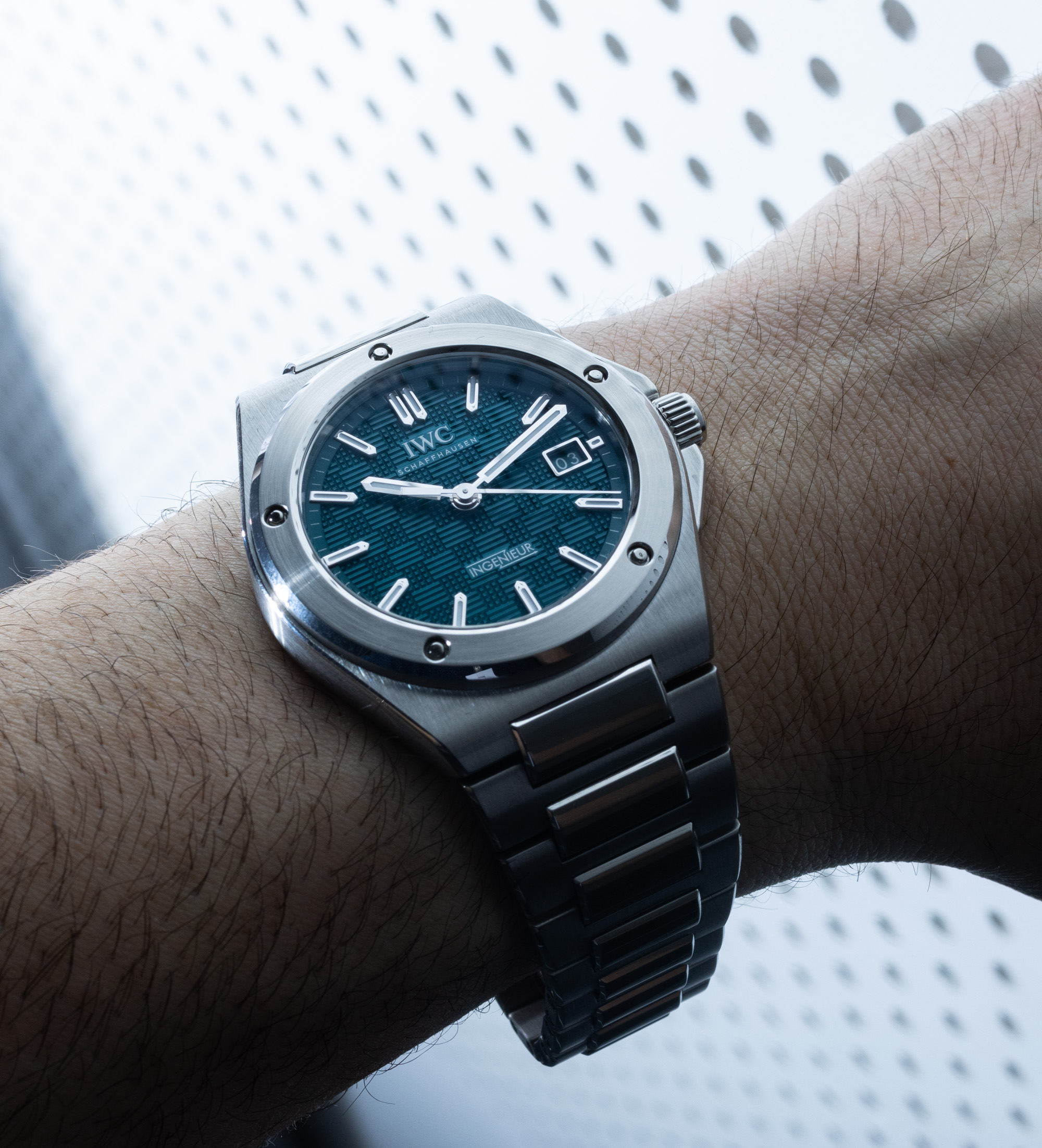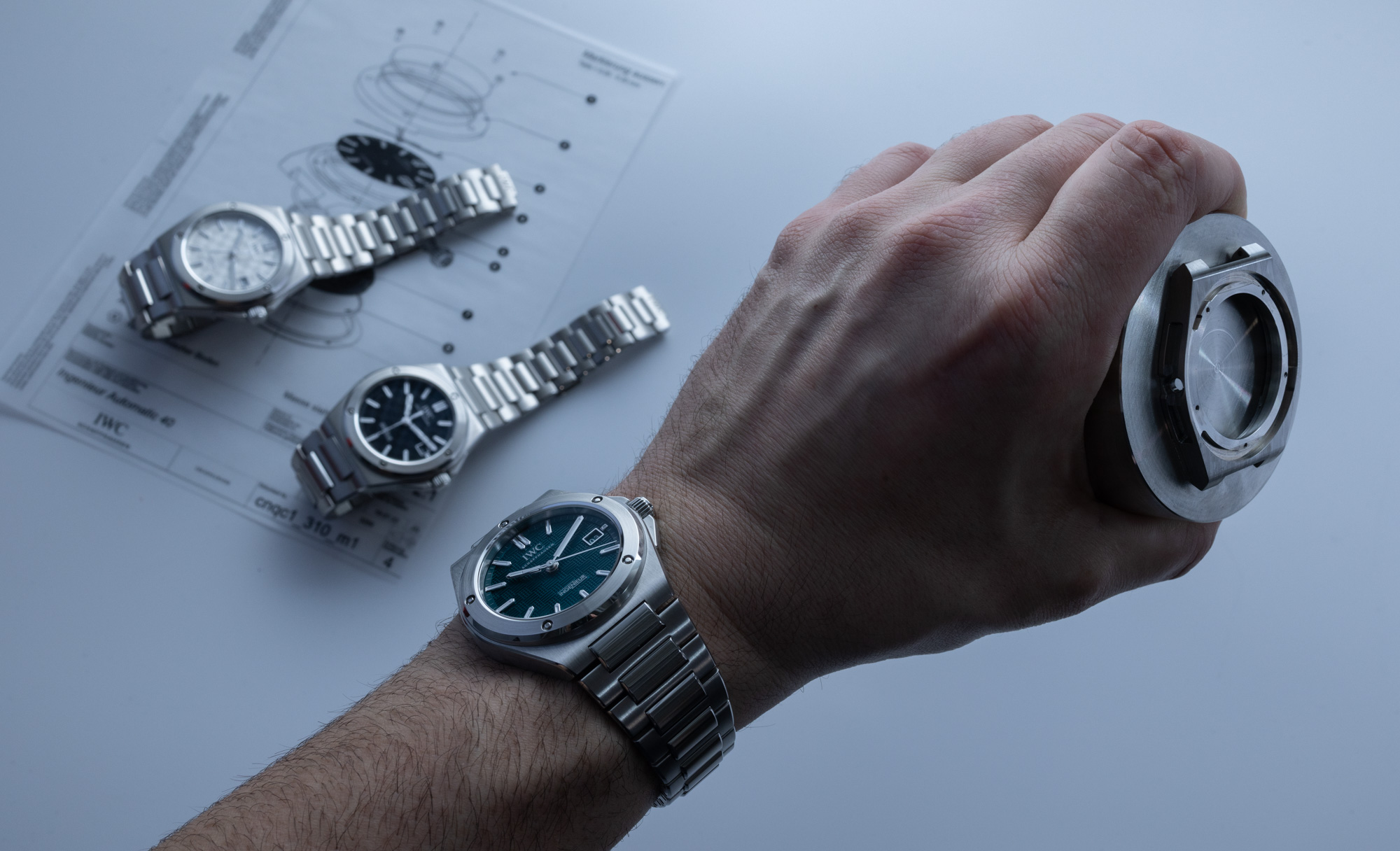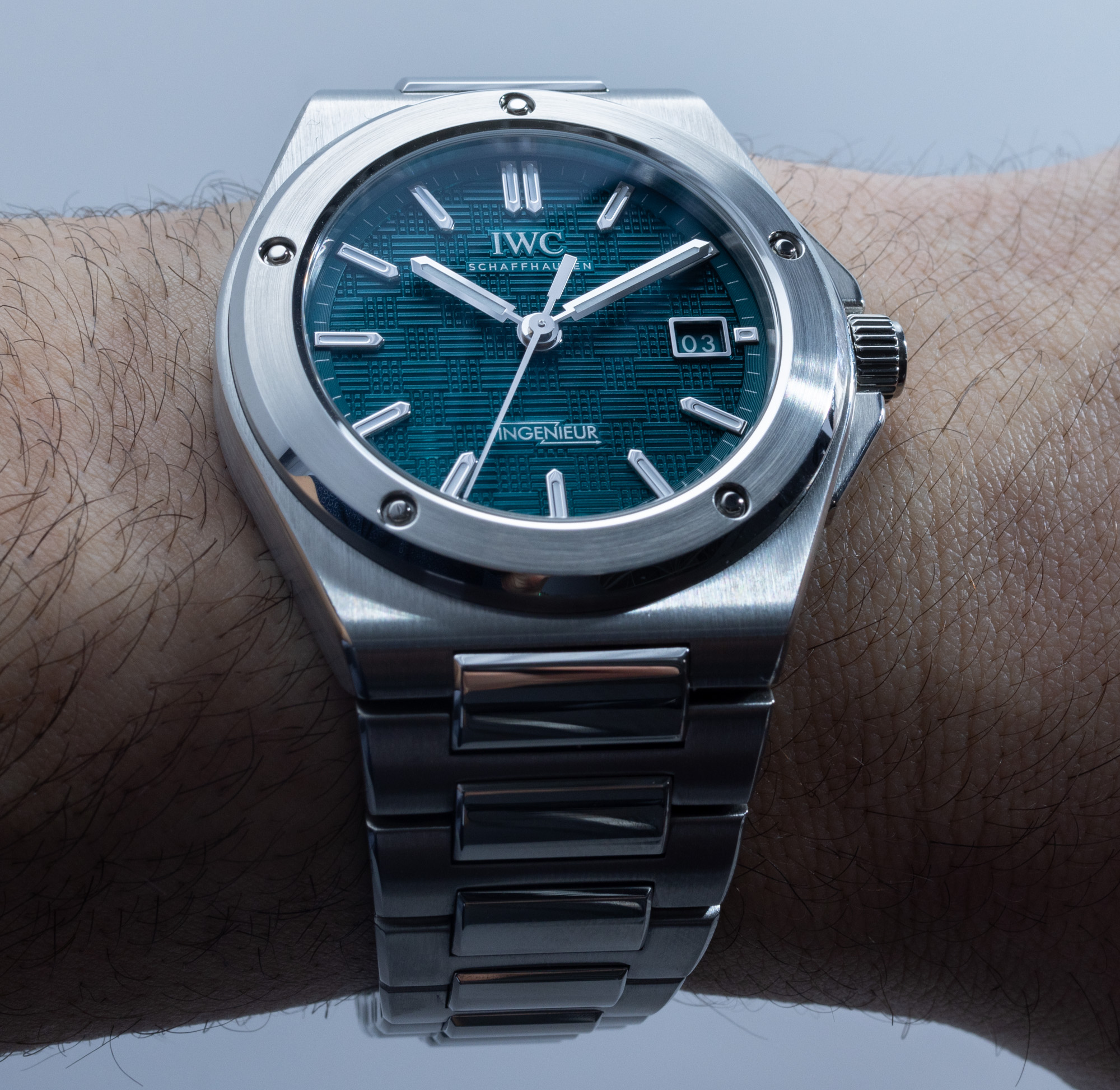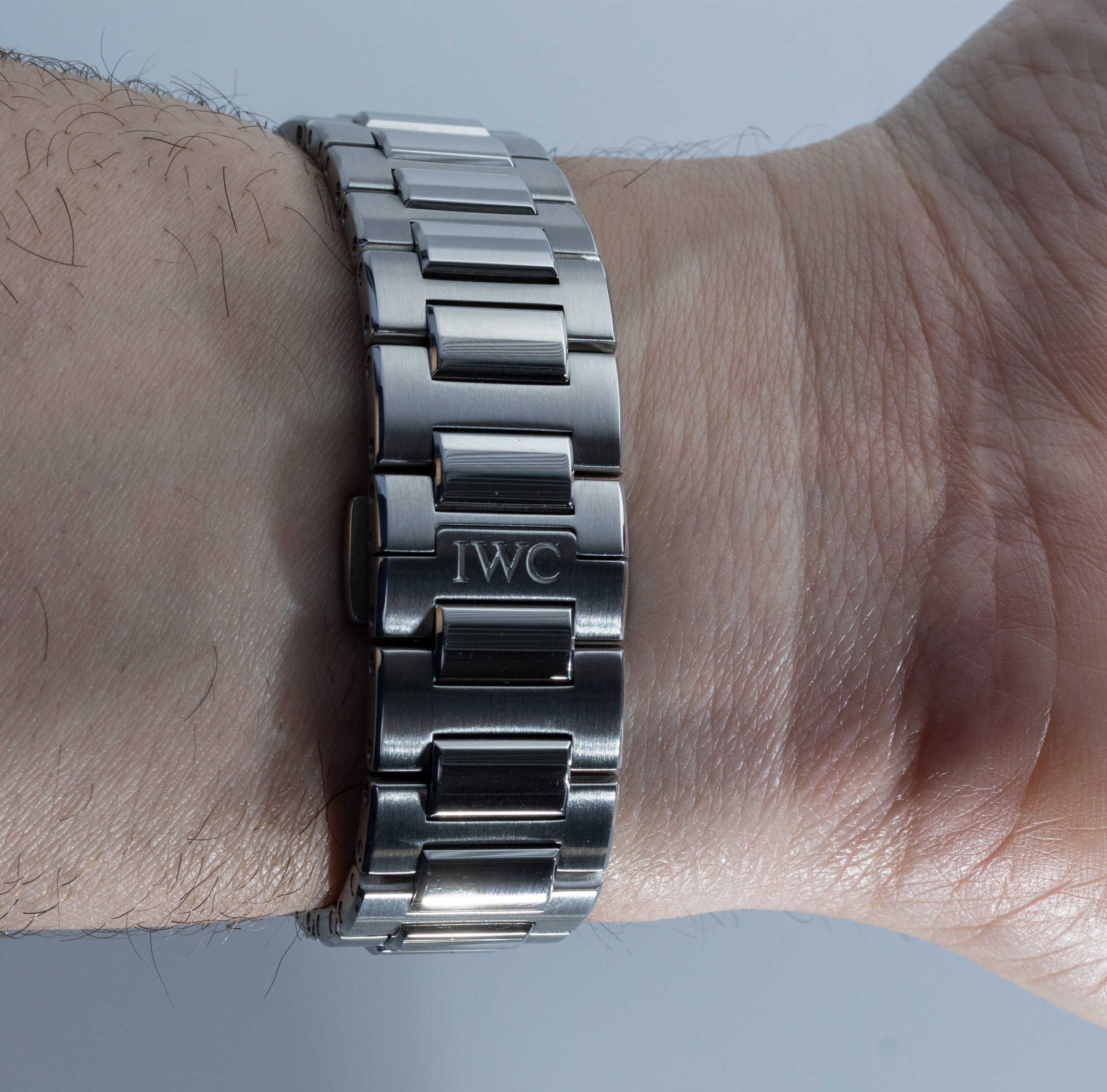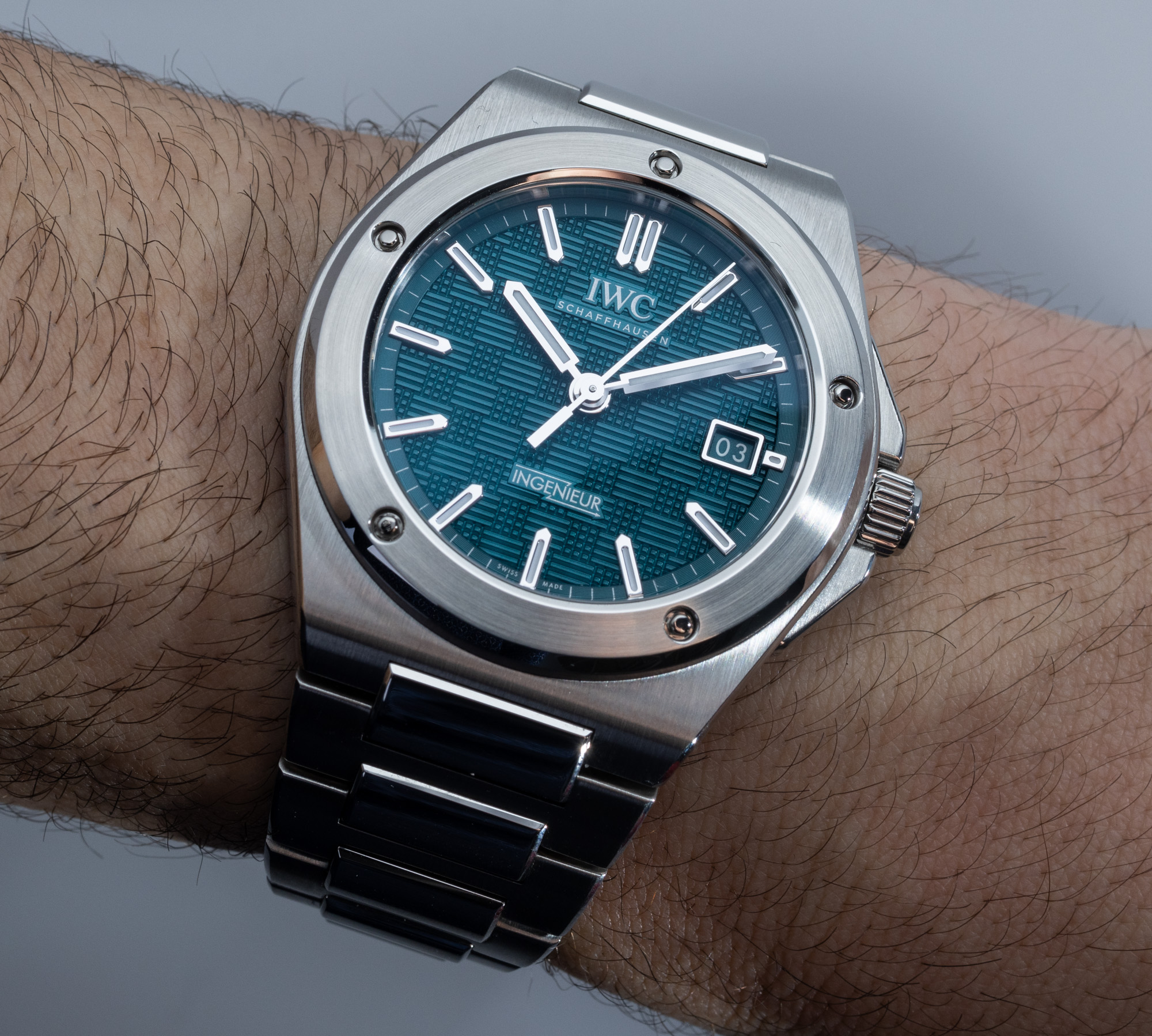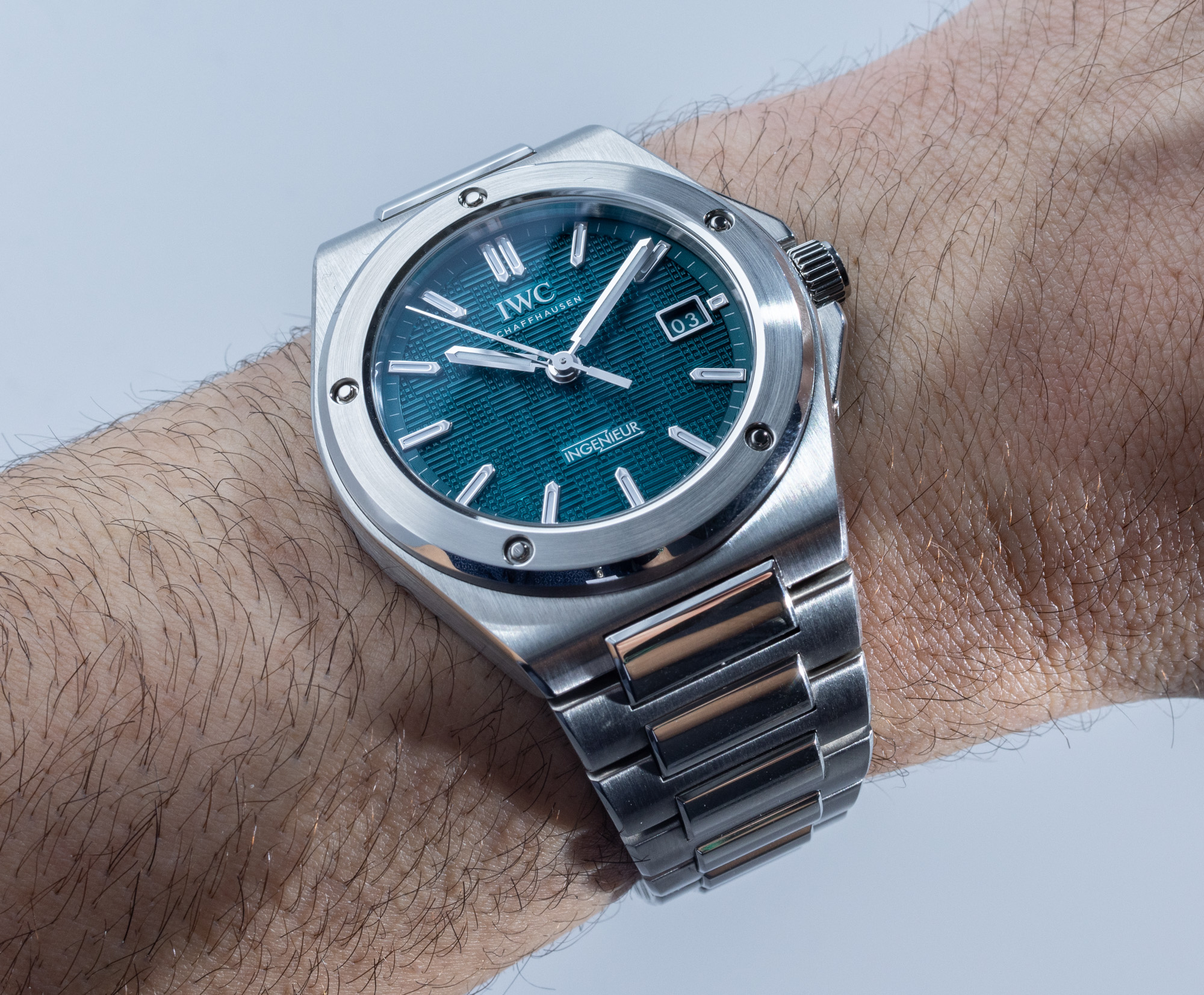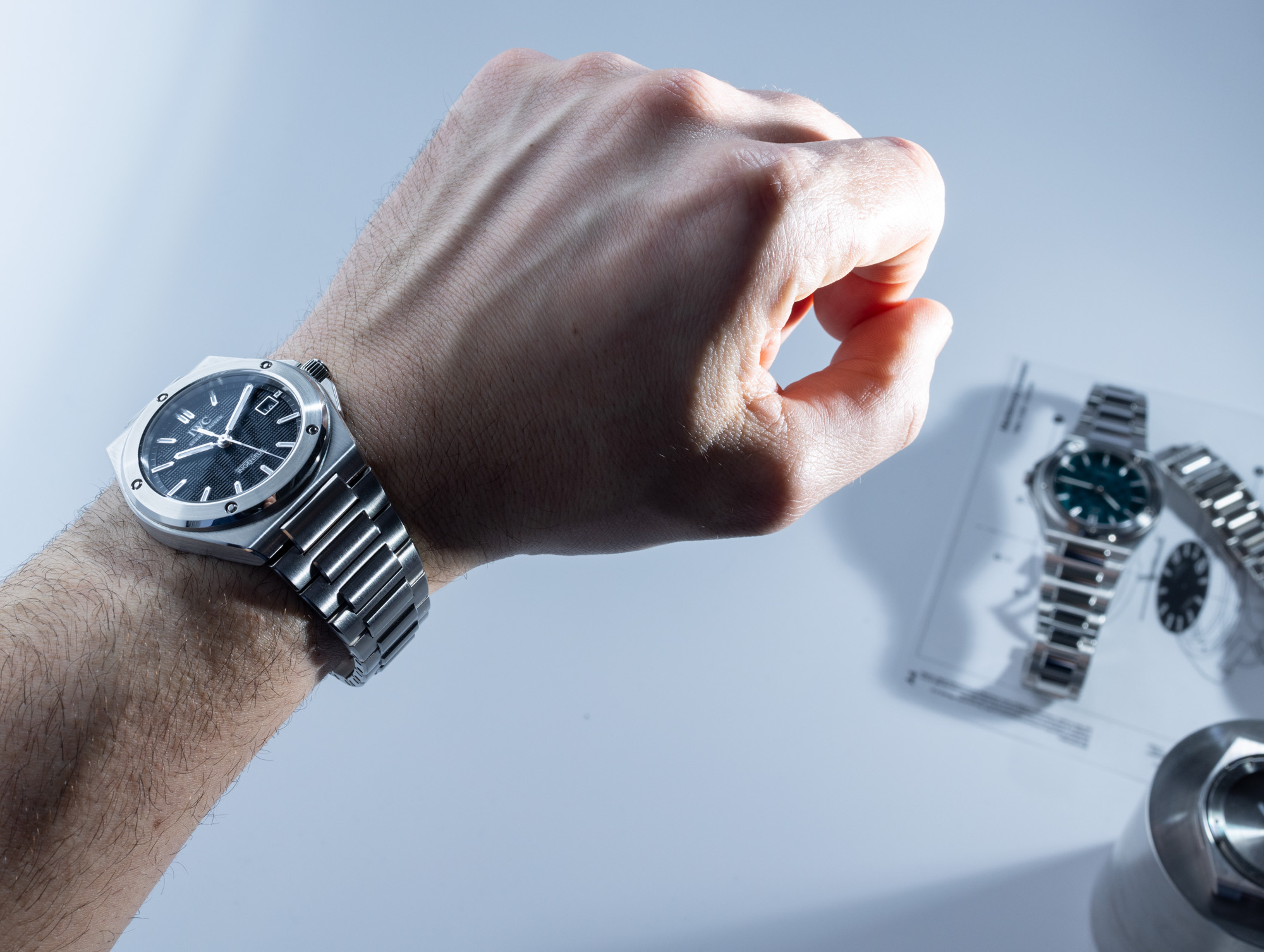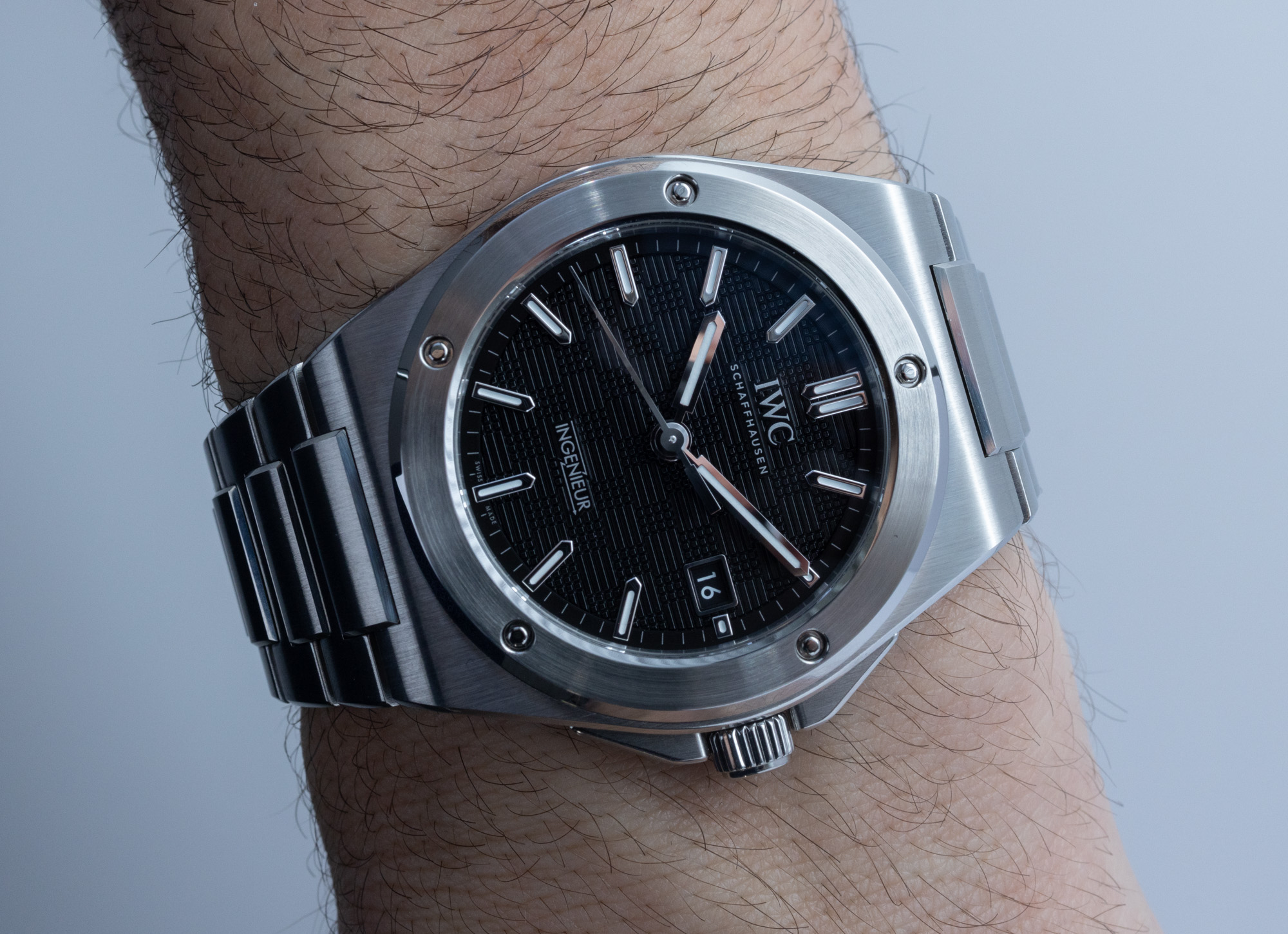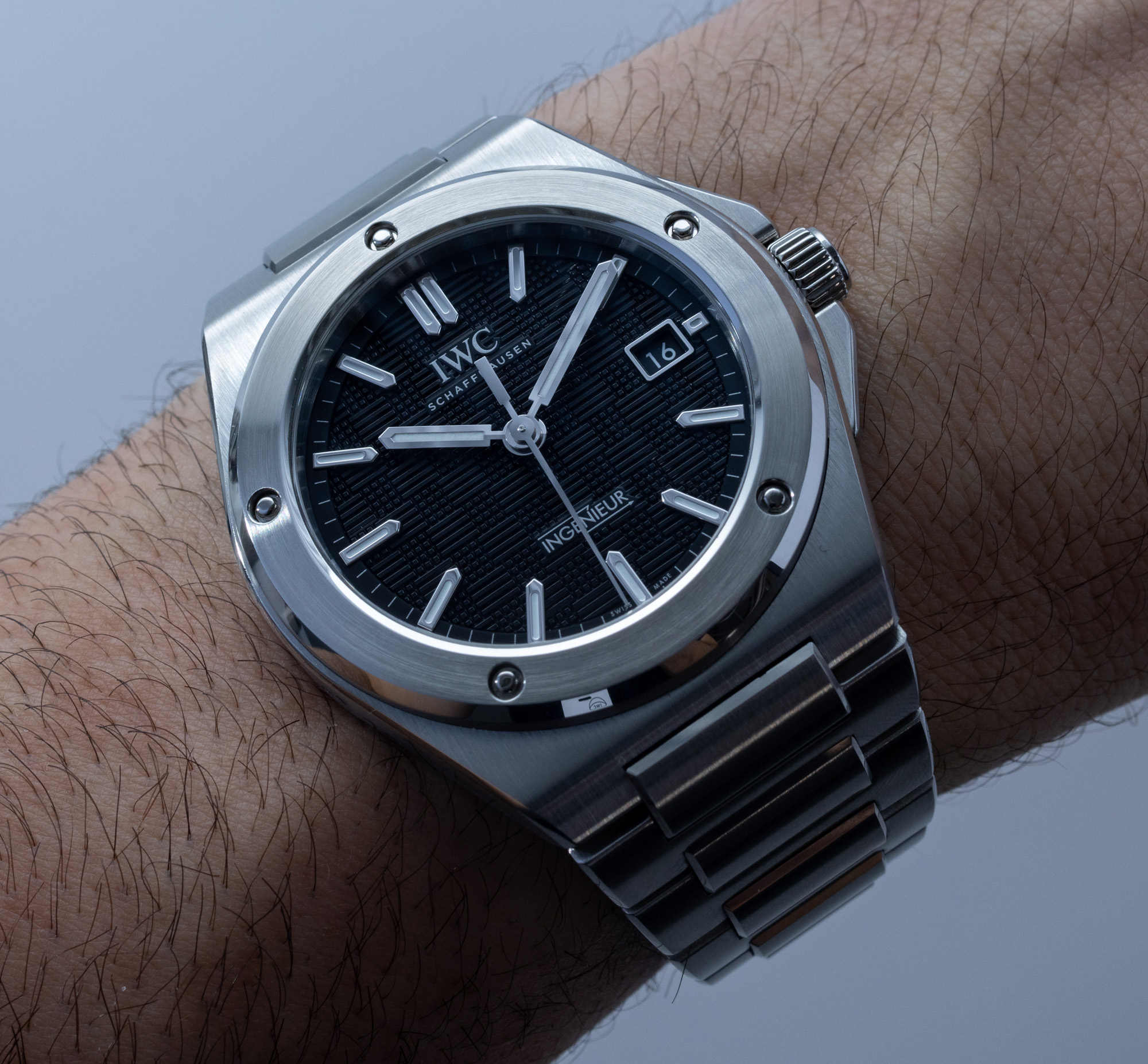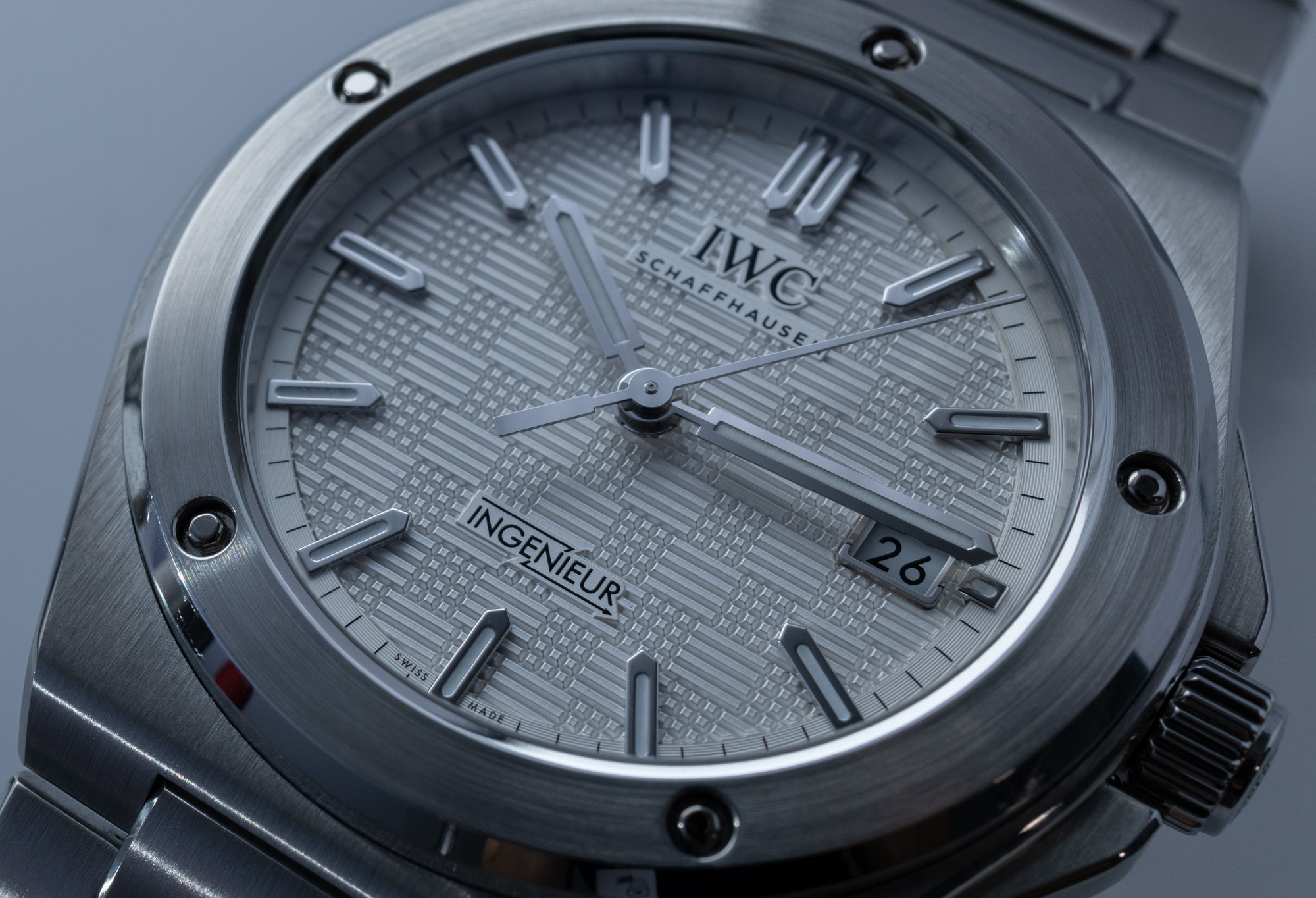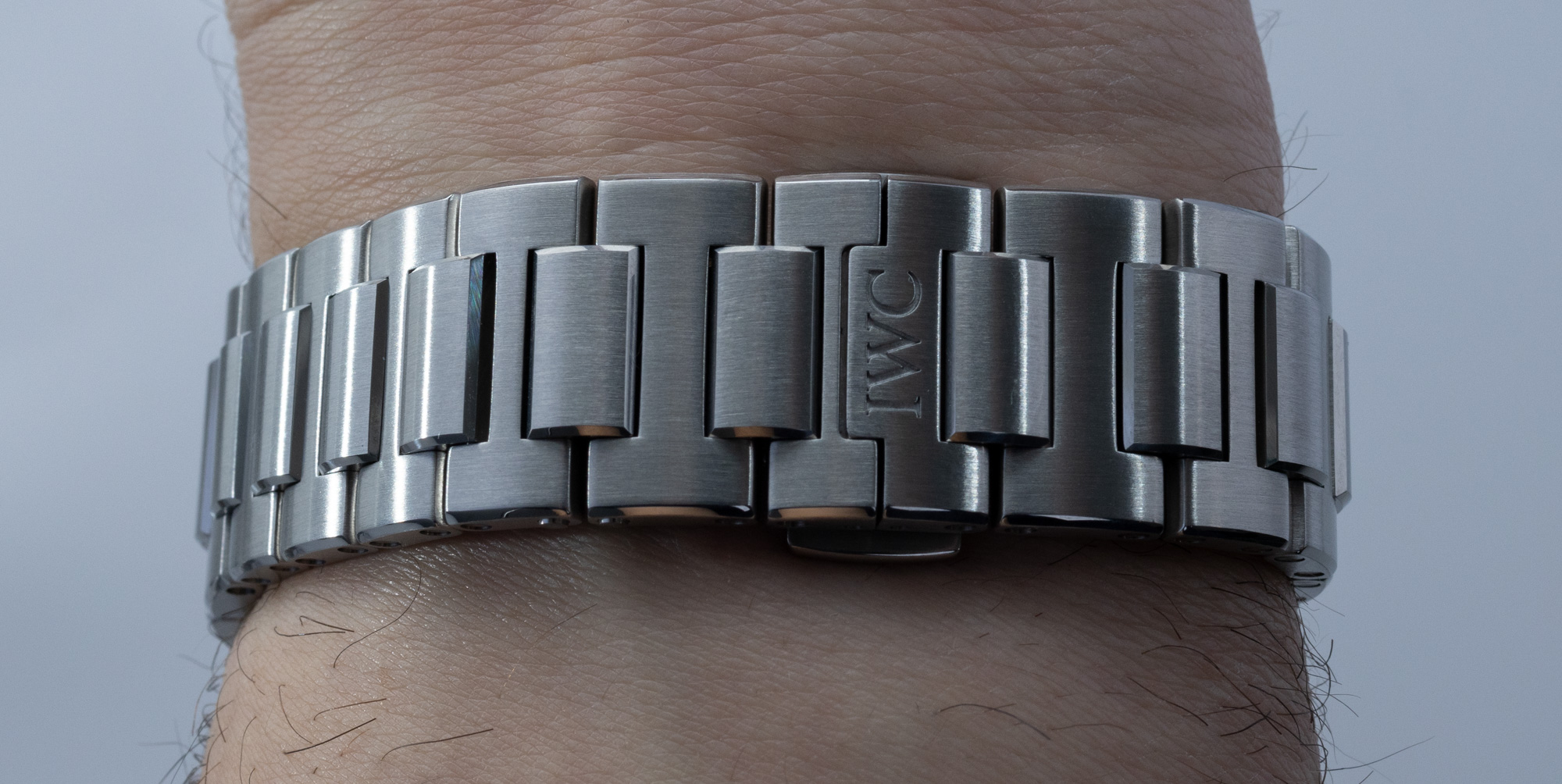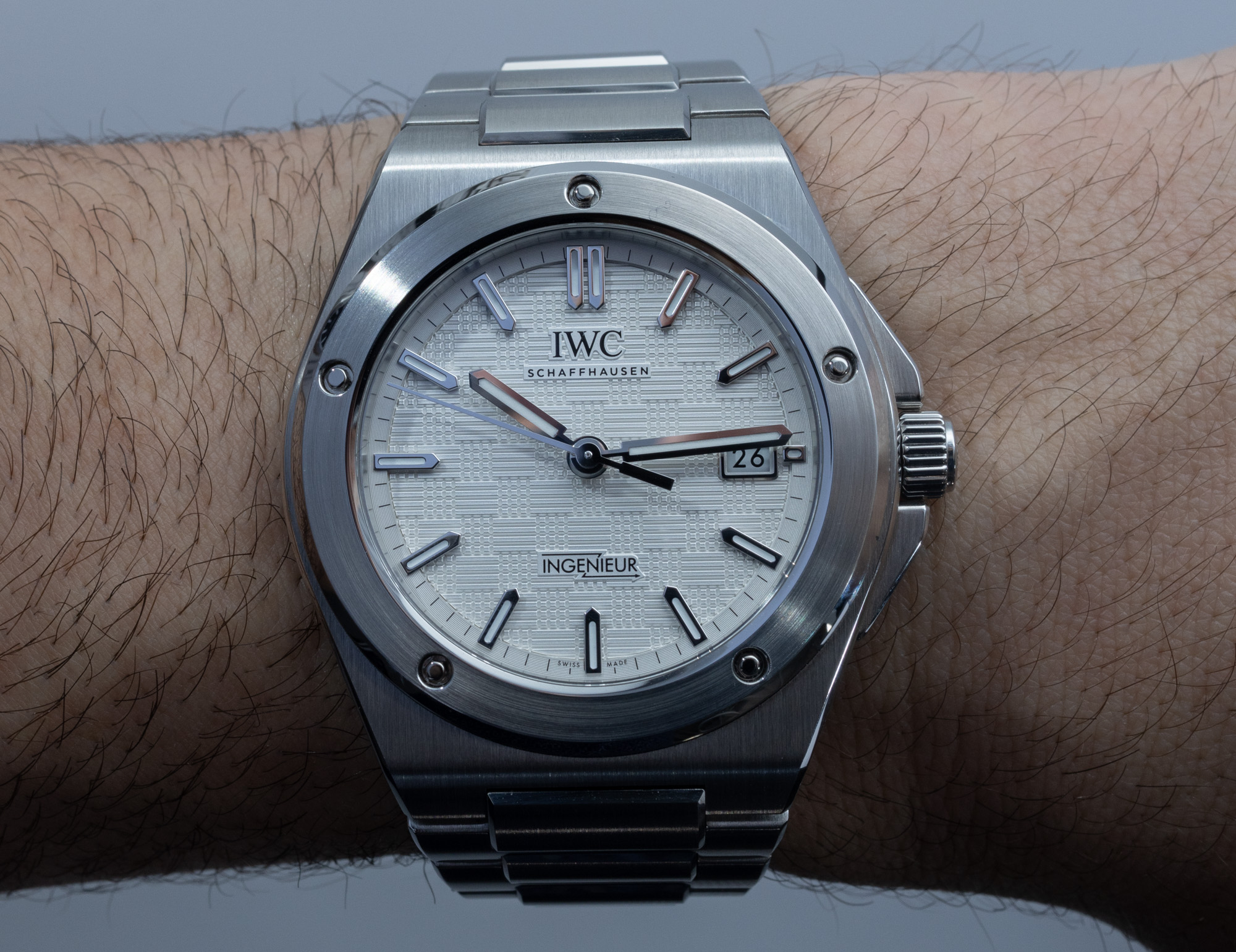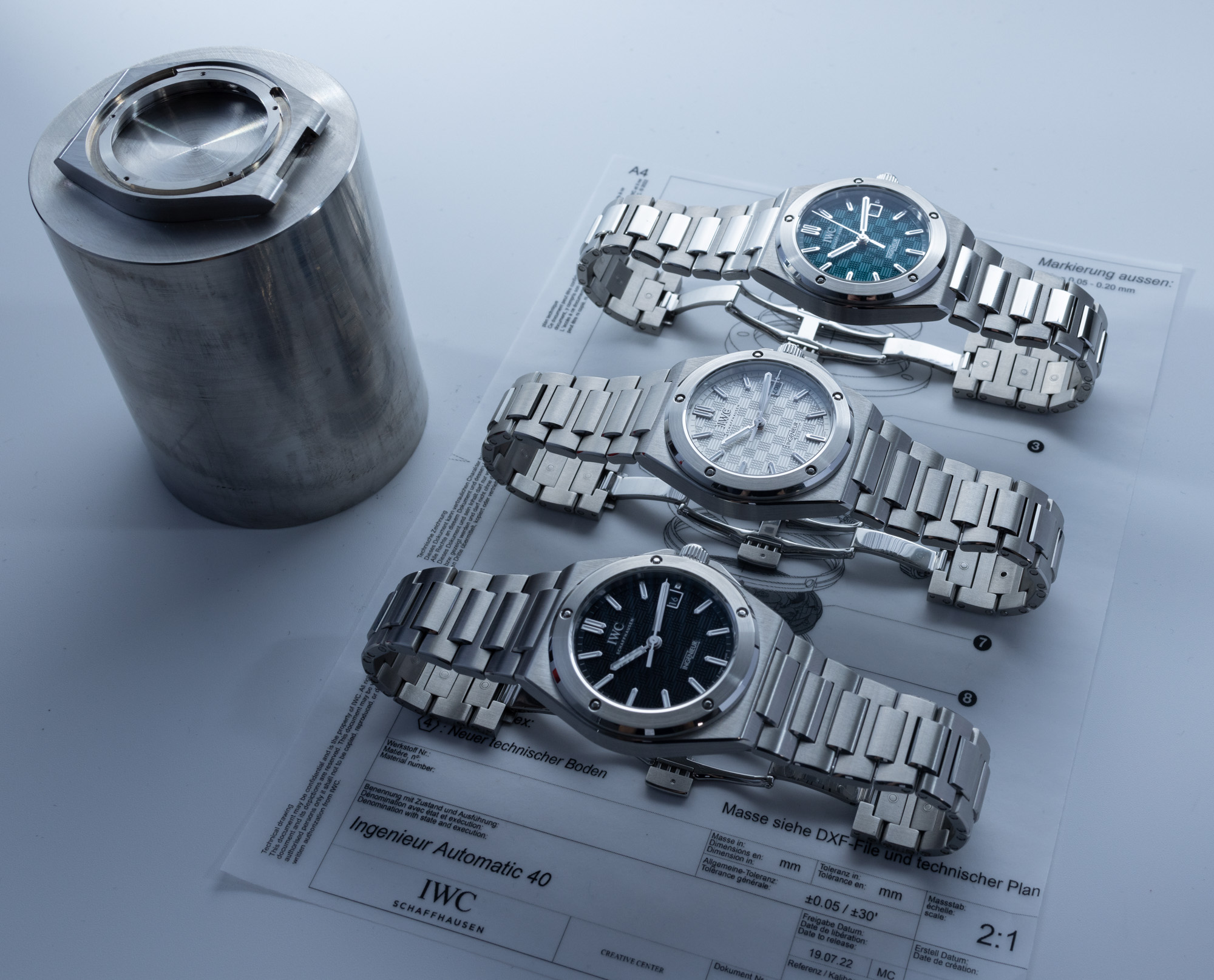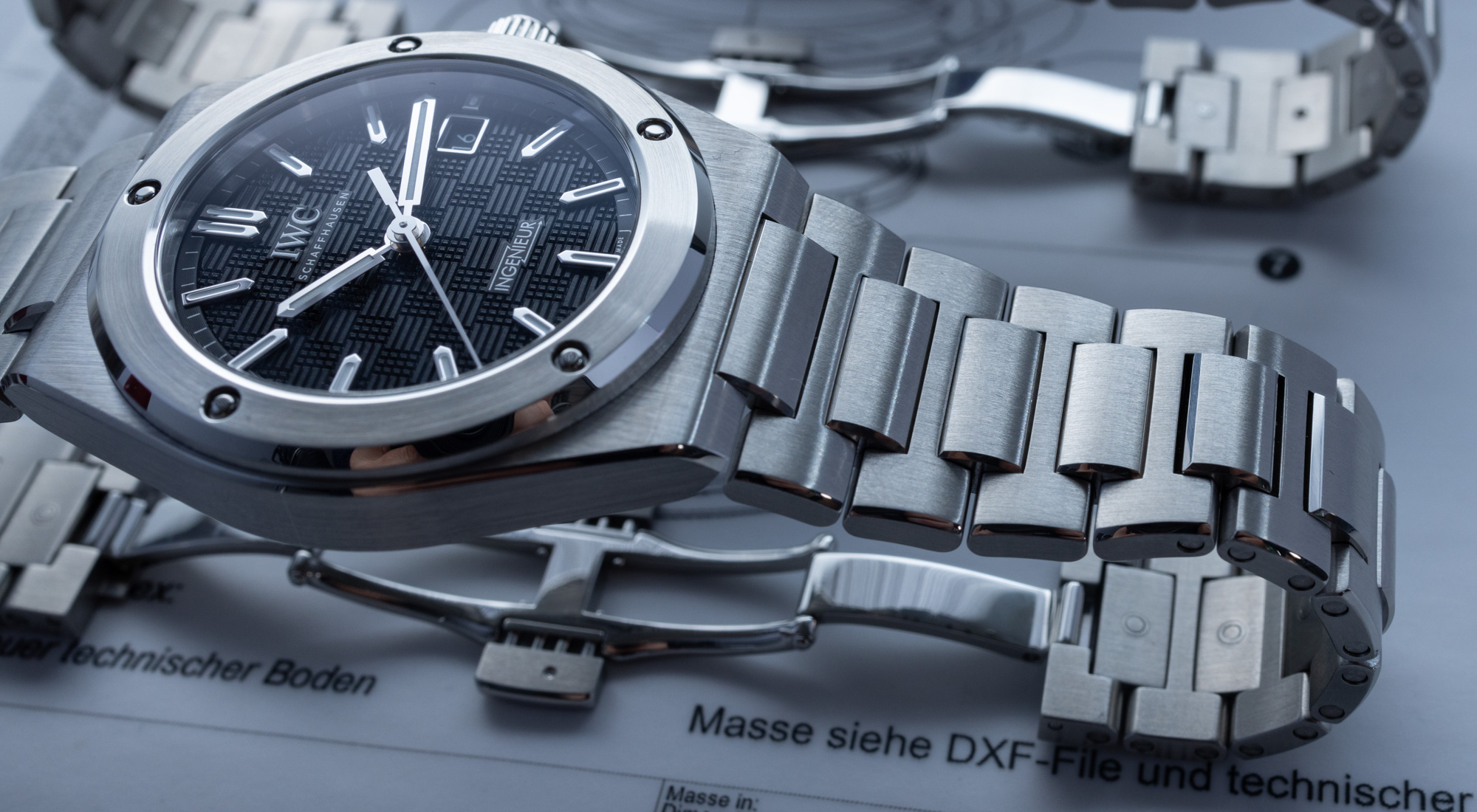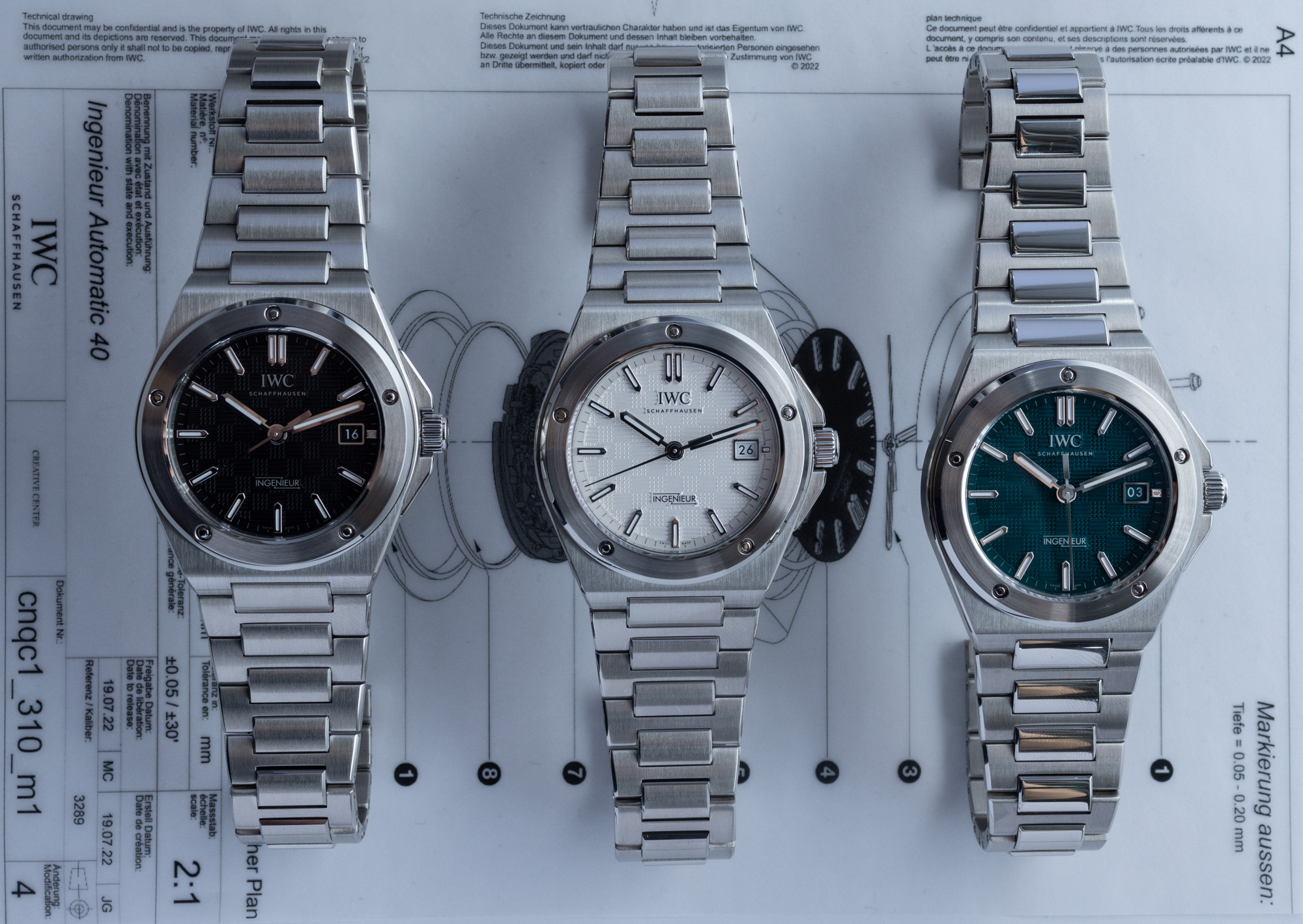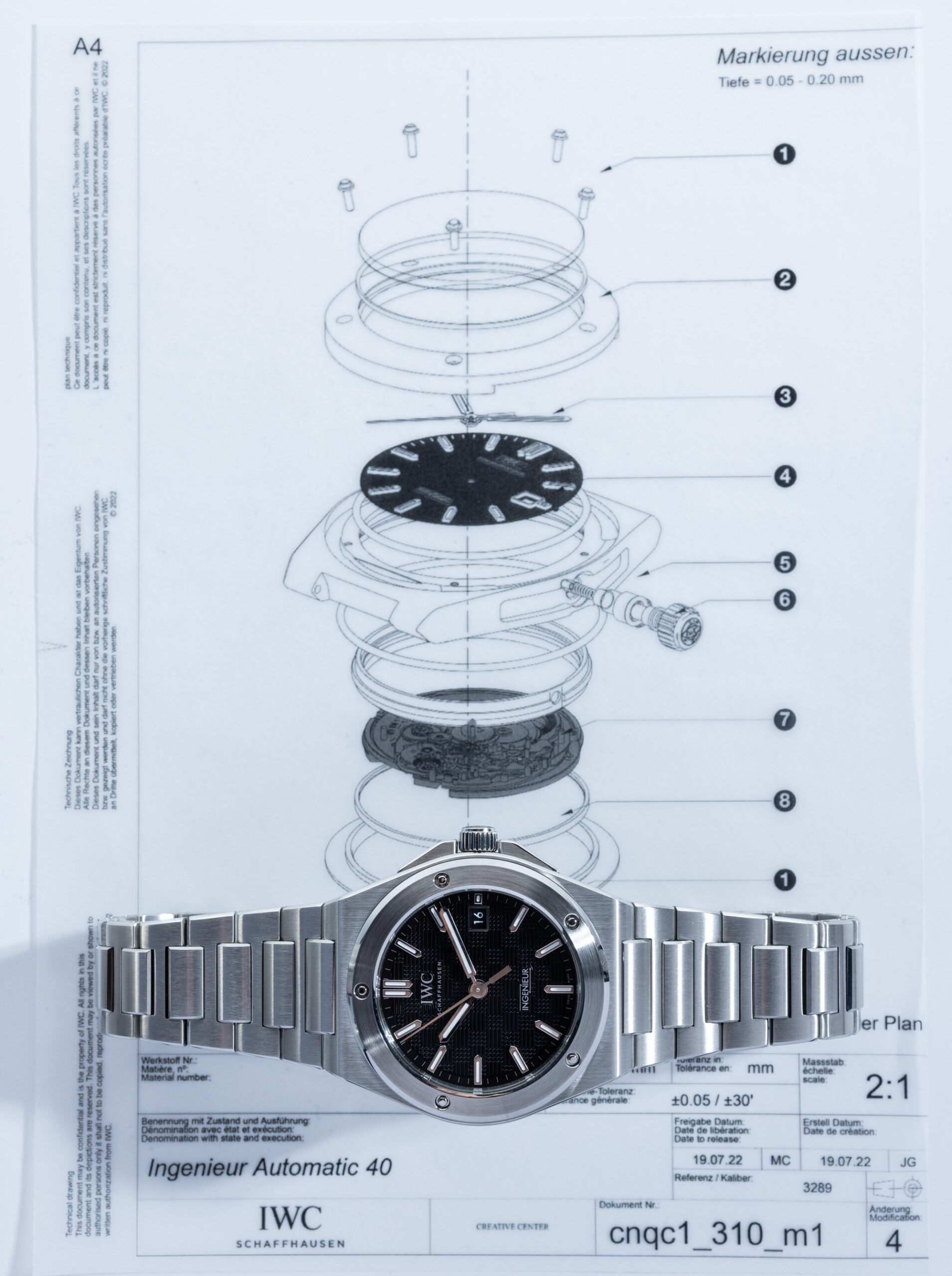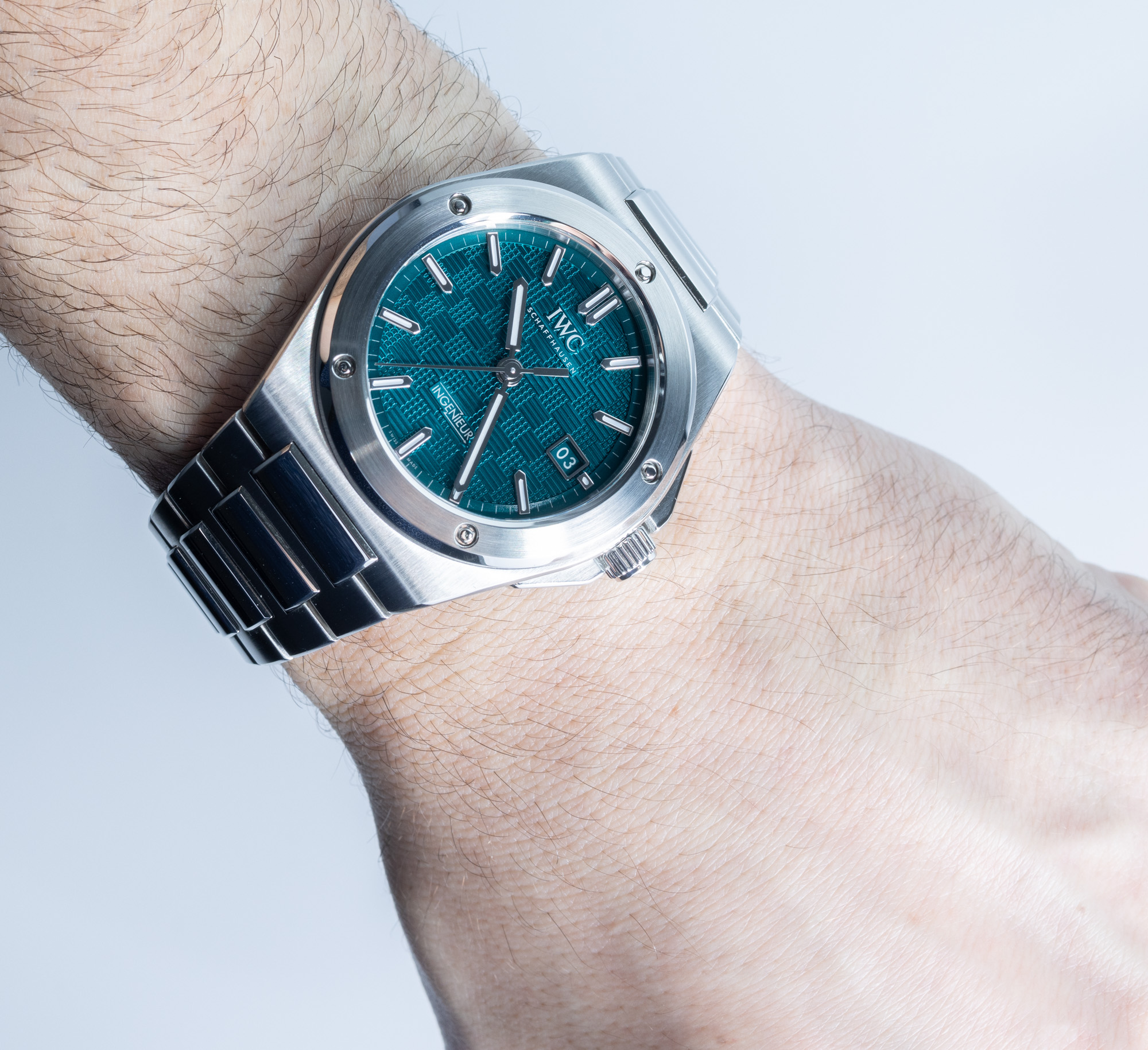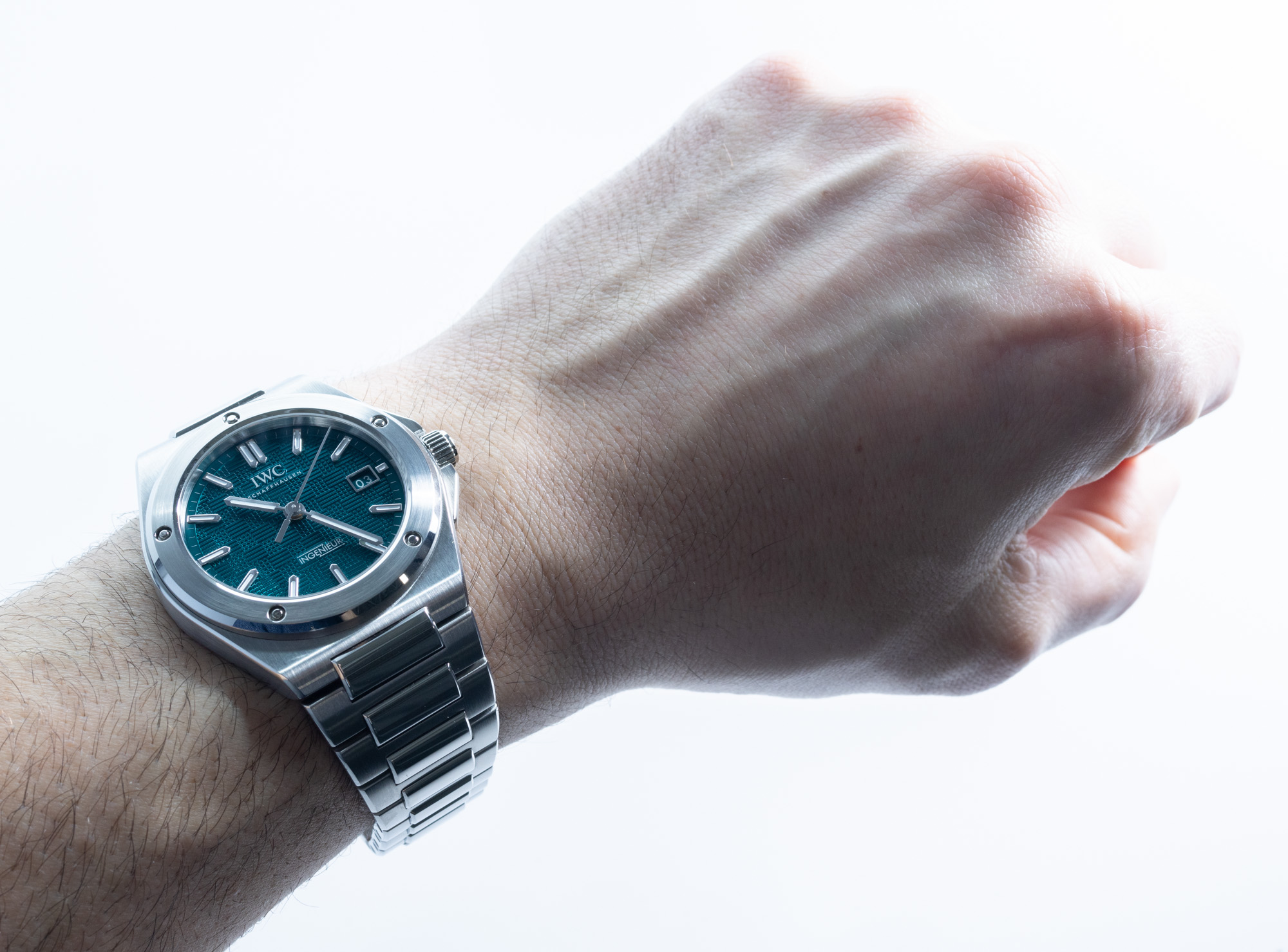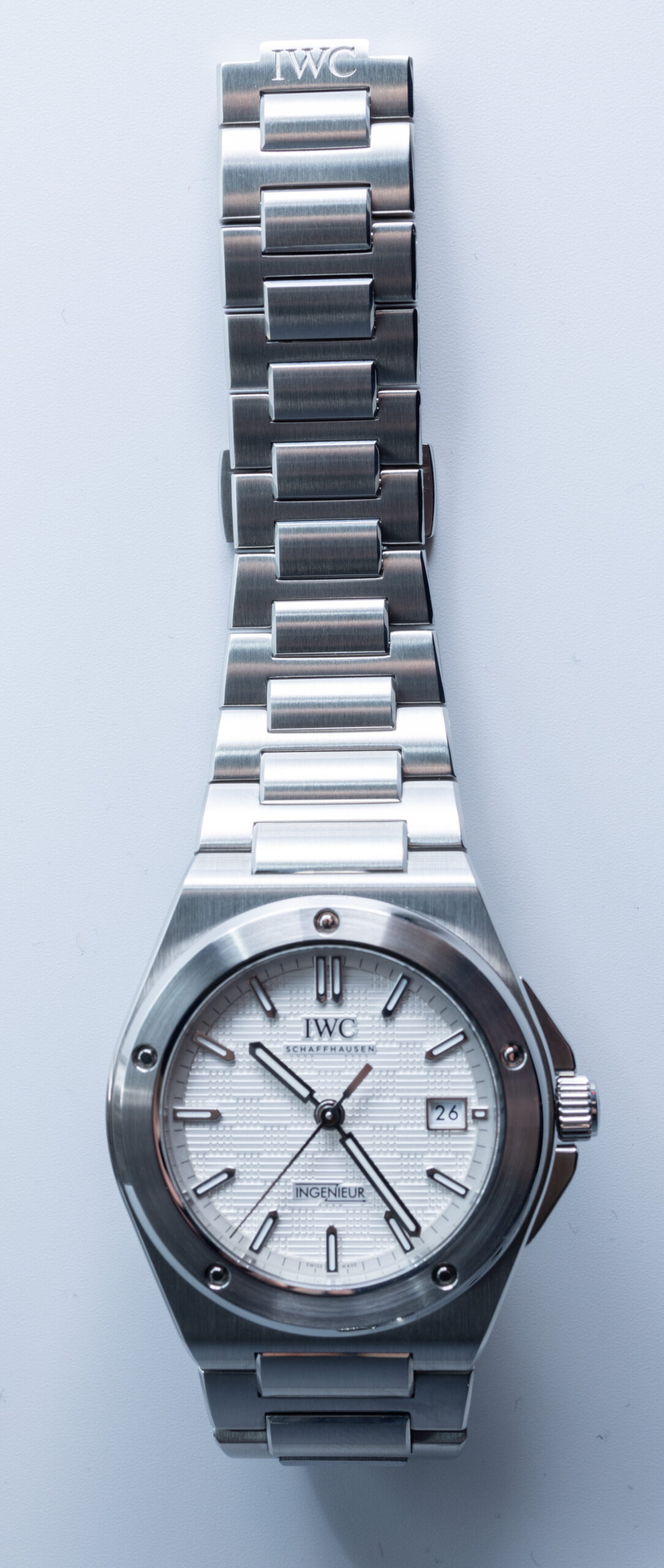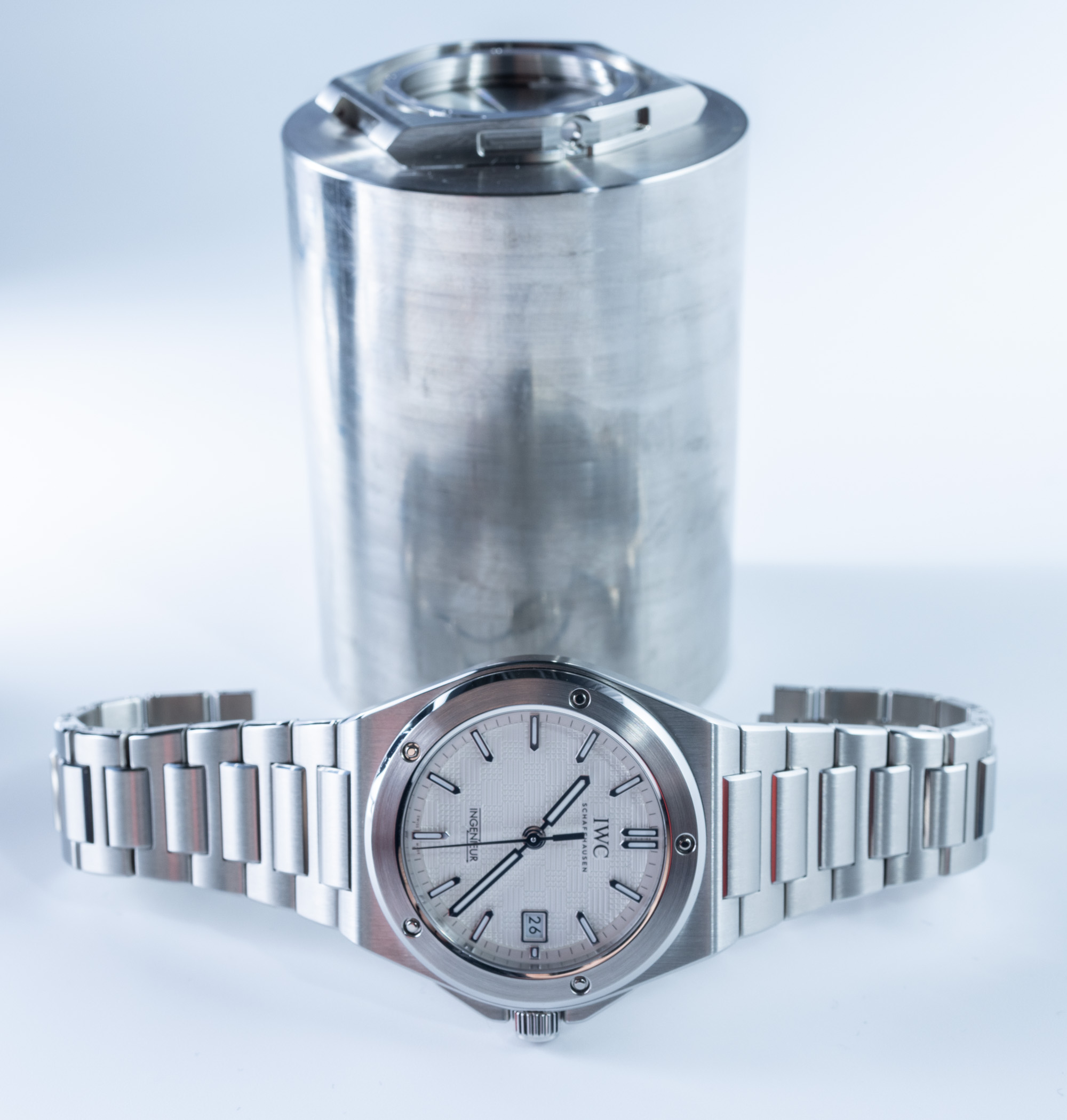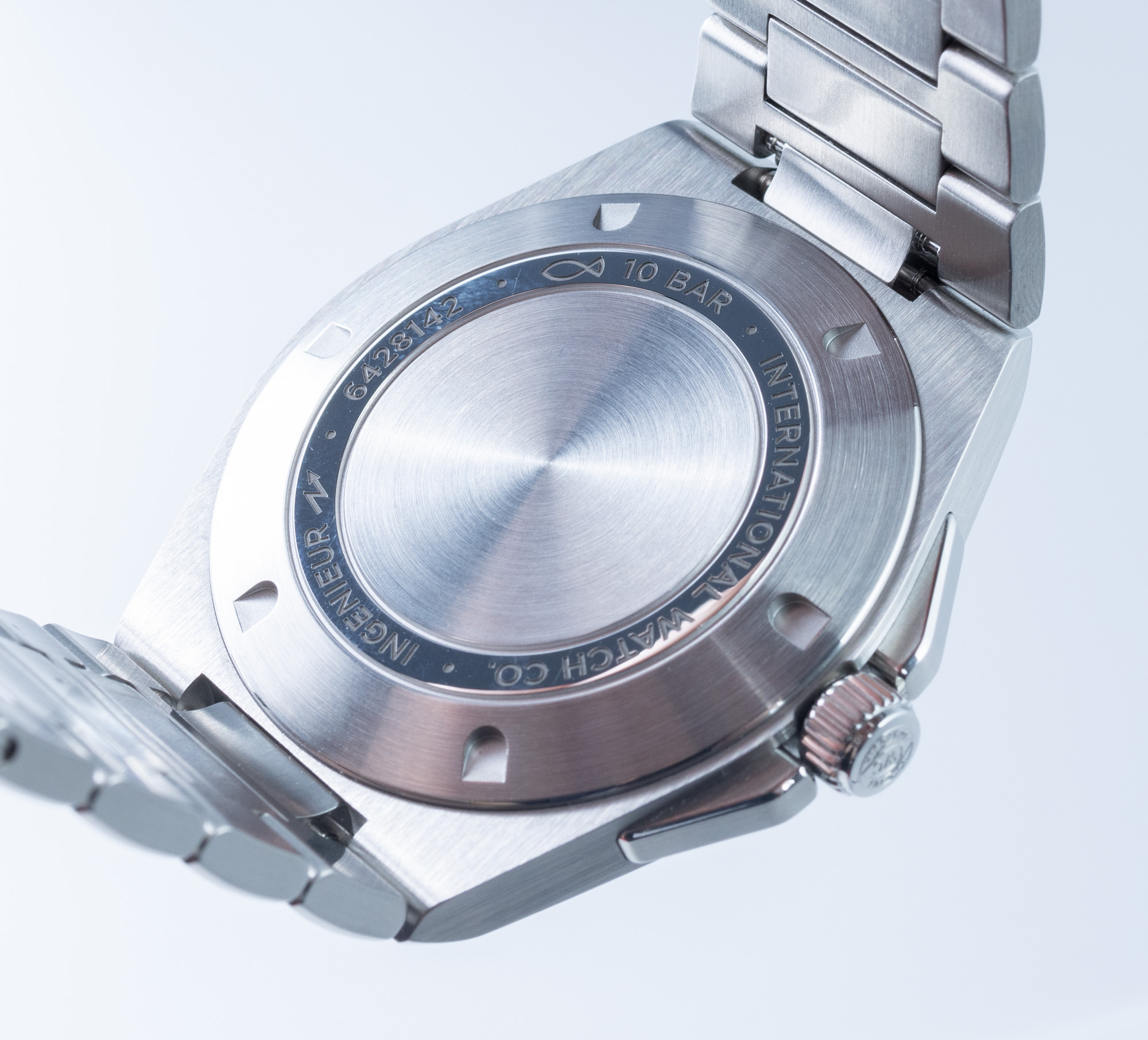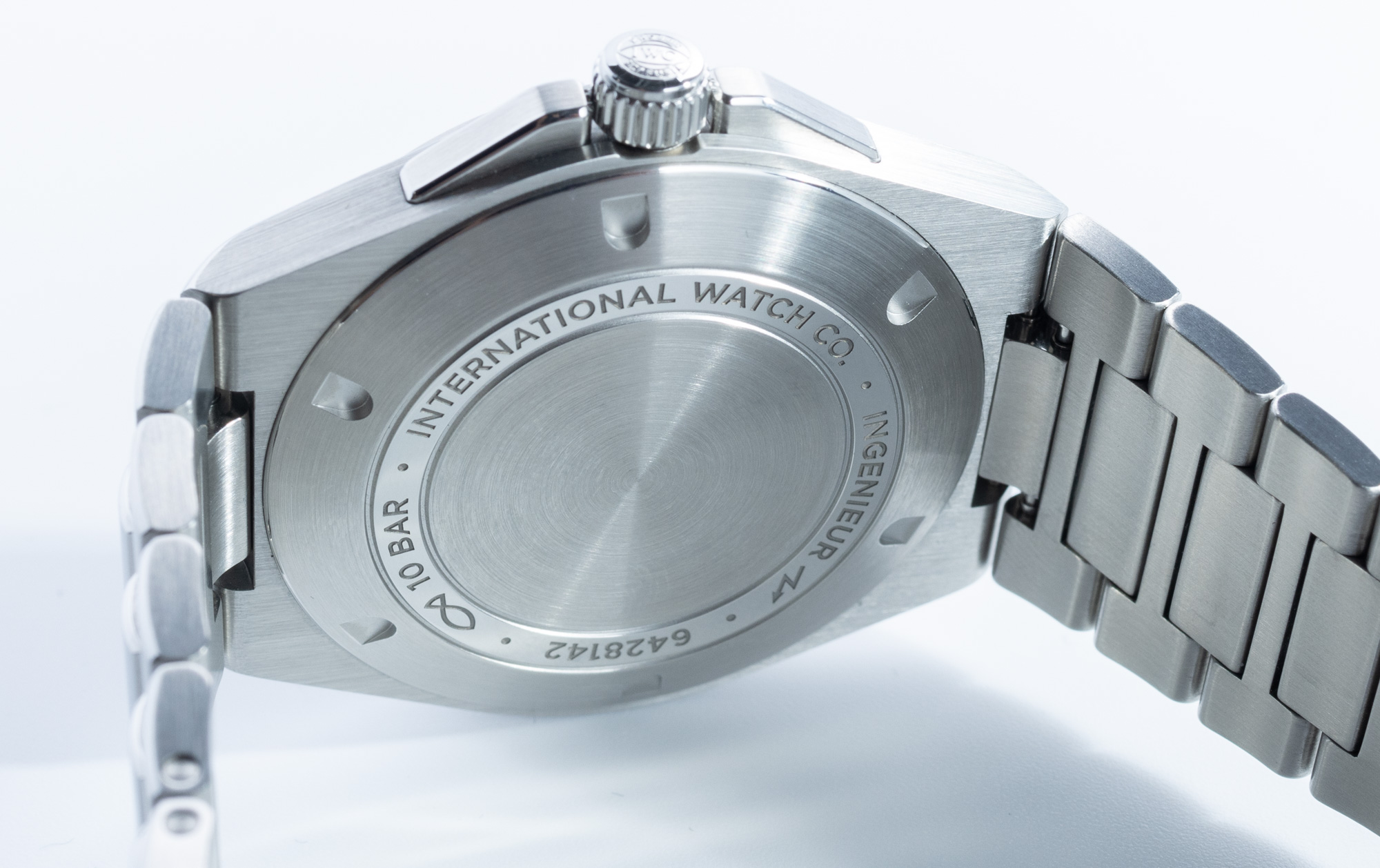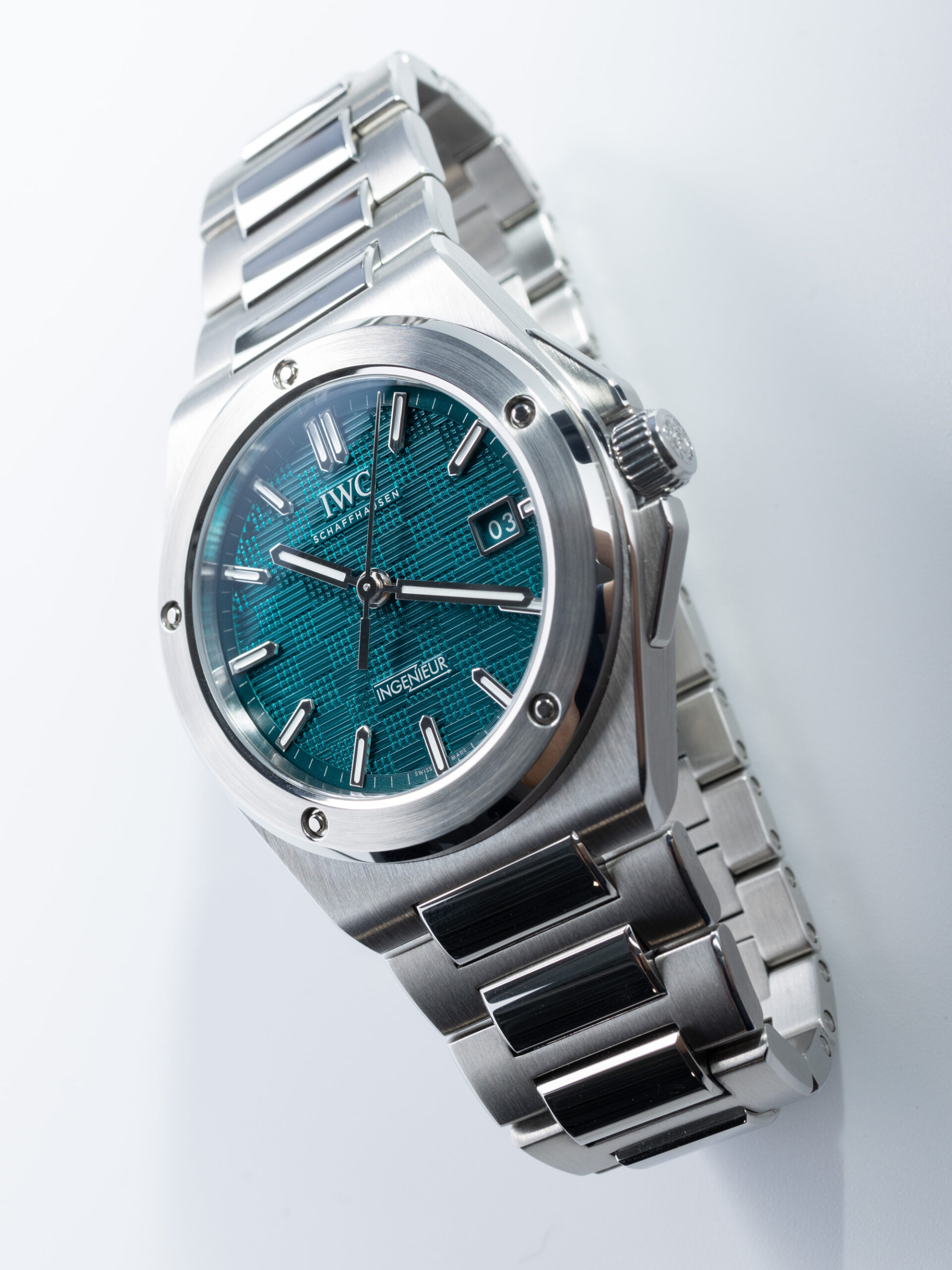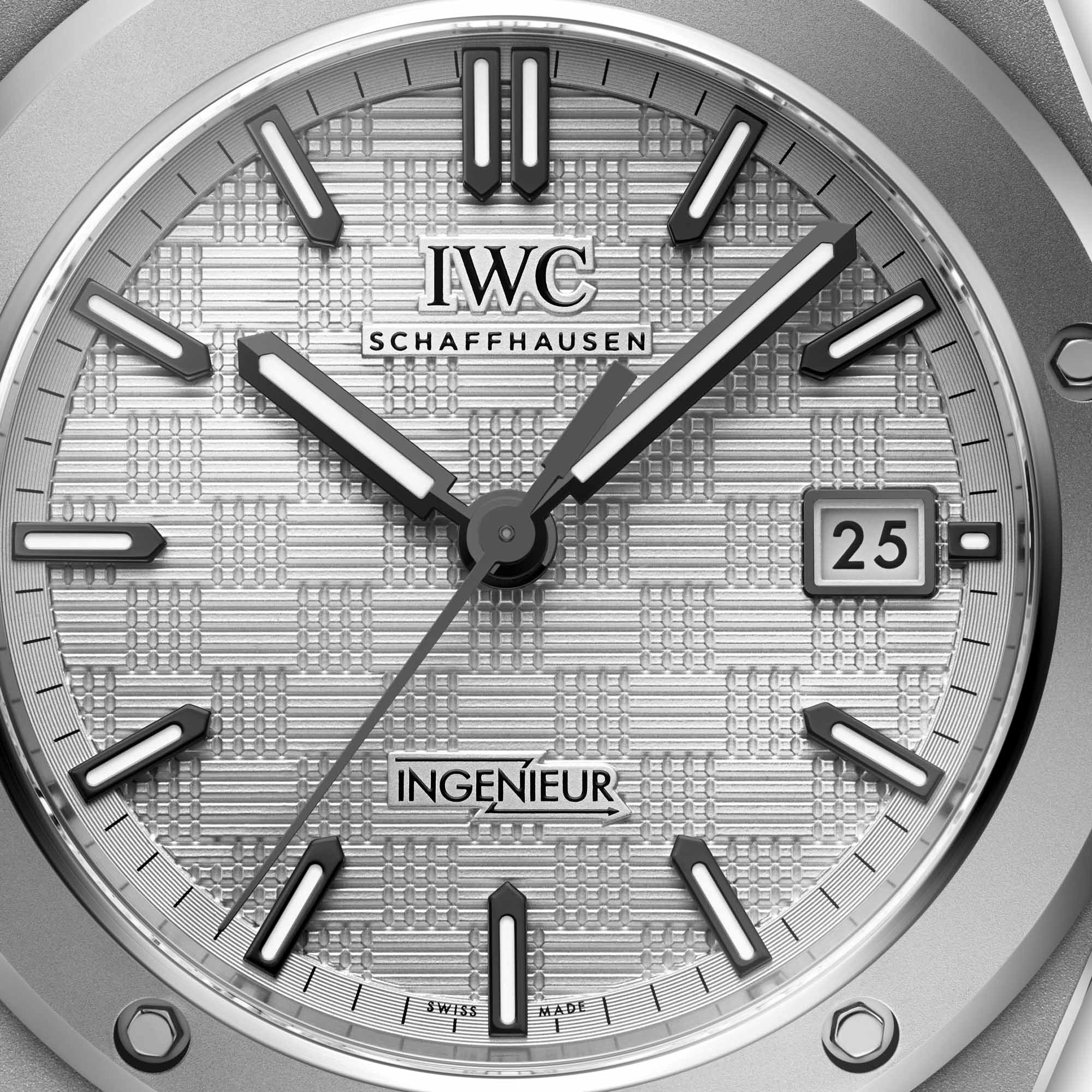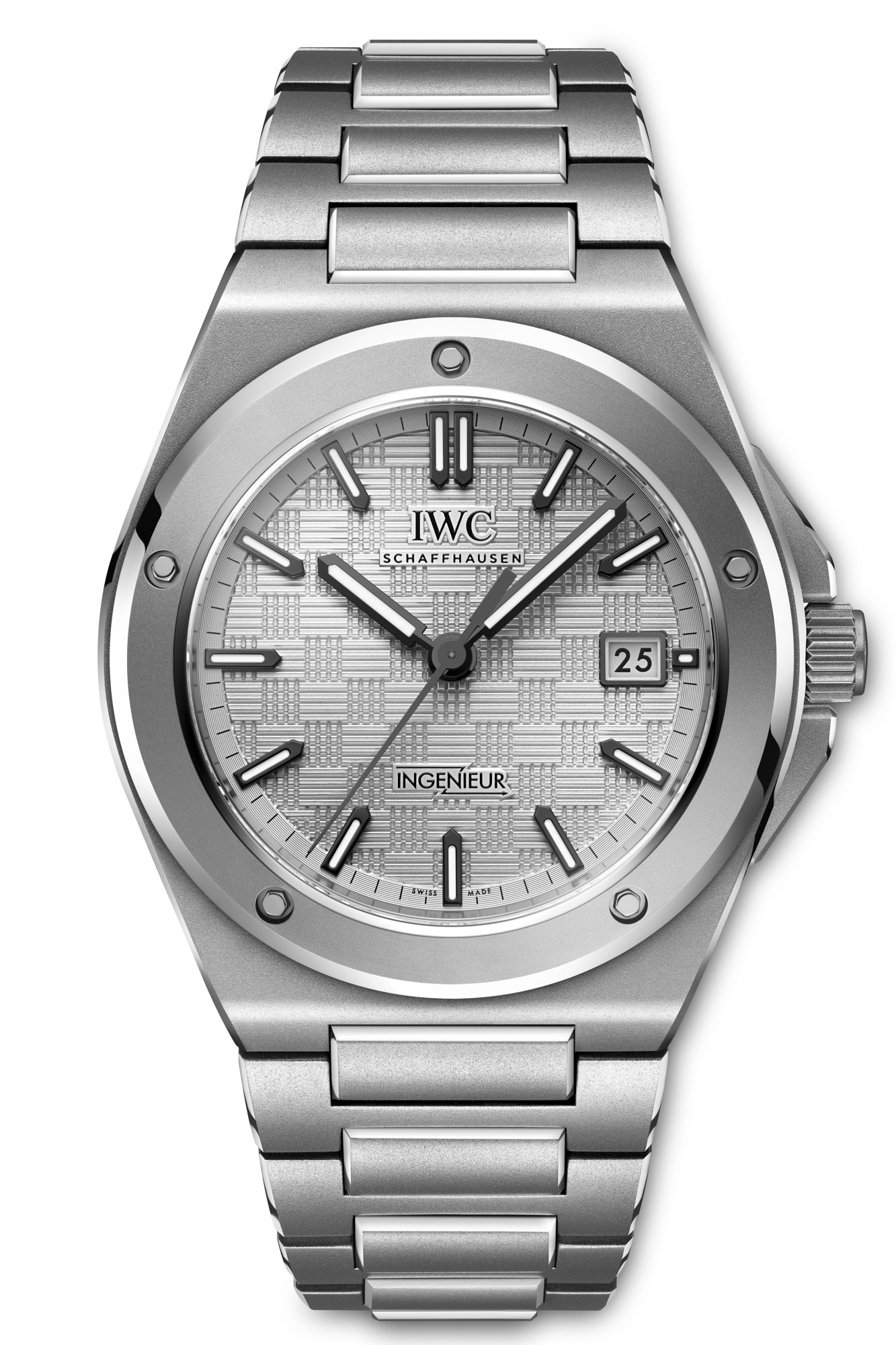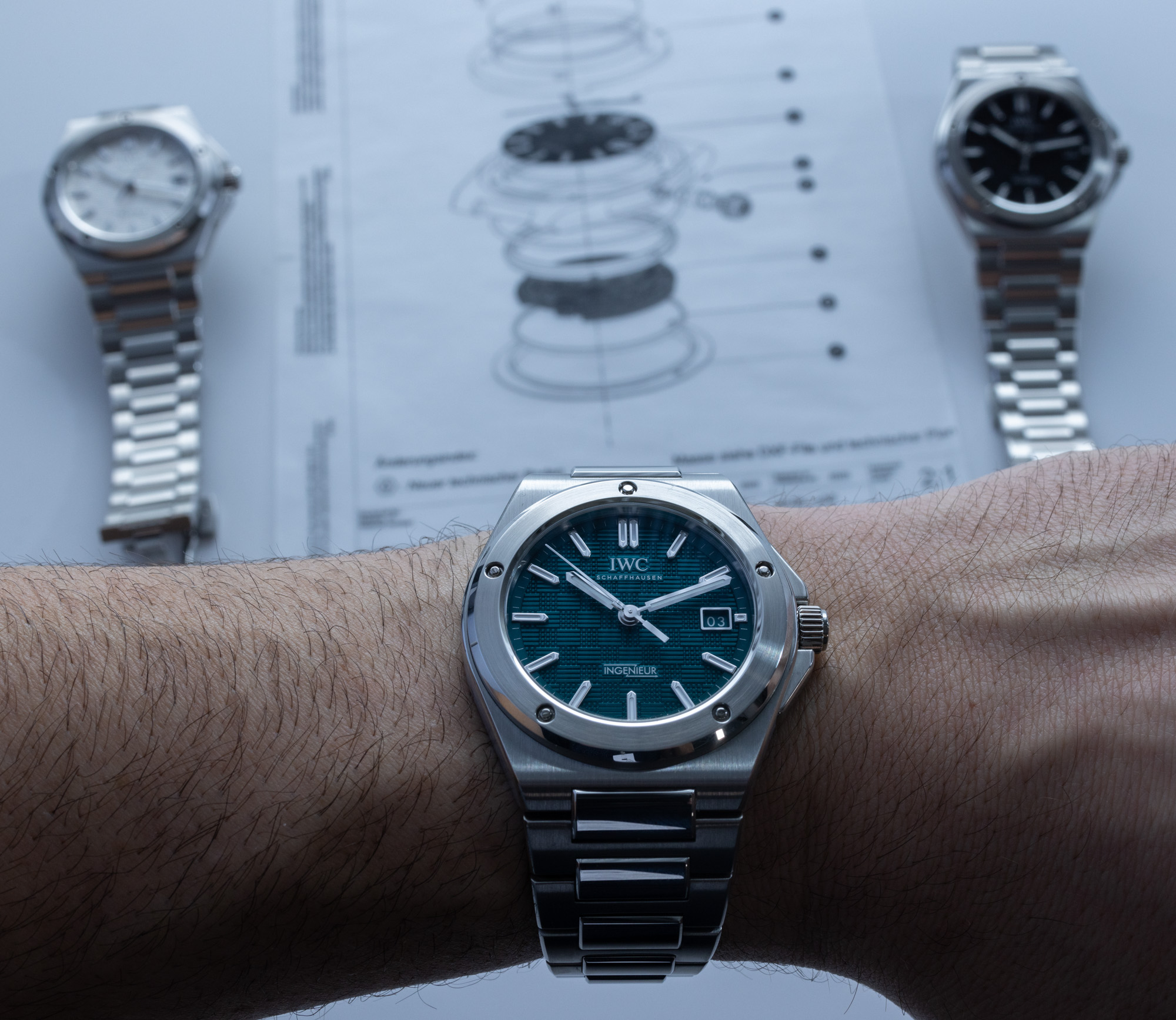
For 2023, Schaffhausen, Switzerland-based IWC watches re-introduces the Ingenieur. This new collection of integrated bracelet sports lifestyle watches required over five years of careful development and is the latest chapter in the long-standing “Ingeniuer” name that has been part of the IWC family since the 1950s. At the time, the Ingenieur was IWC’s answer to the Rolex Milgauss and other anti-magnetic watches intended for scientists and engineering professionals who needed reliable timekeeping when working around strong magnetic fields. In the 1970s, IWC used the Ingenieur name for what would be its entry into the then-popular world of steel watches with sophisticated case and bracelet constructions. Other high-end Swiss watchmakers were doing the same thing, in large part as a direct response to the fact that gold prices were so high. The strategy was to offer a steel watch that was as interesting as a gold watch, but priced at previous gold watch prices — not at the then-current price of about three times the historical cost of gold metal. For brands like IWC and other high-end watchmakers of the 1970s, ornately constructed steel watches were an answer to market demand.
Remember that, back then, even more so than today, watchmakers were manufacturing companies and not design companies. They frequently relied on external creative talent to come up with new models that they would then industrialize and manufacture. A popular third-party designer working for watch brands at the time was Gerald Genta. He is credited with creating the Royal Oak for Audemars Piguet, the Nautilus for Patek Philippe, and later launching his own brand and offering more novel designs. During the late 1960s and early 1970s, IWC was among his clients, and with them, he designed a product known as the Ingenieur SL. This introduced a new form for the Ingenieur which features a bezel with functional screws, an integrated bracelet, and a sporty character that melded decorative and functional elements together. This product was originally released in 1976 and, since then, it has been the foundation for most IWC Ingenieur watch designs. So, what makes the new 2023 IWC Ingeniuer Automatic 40 watches different?
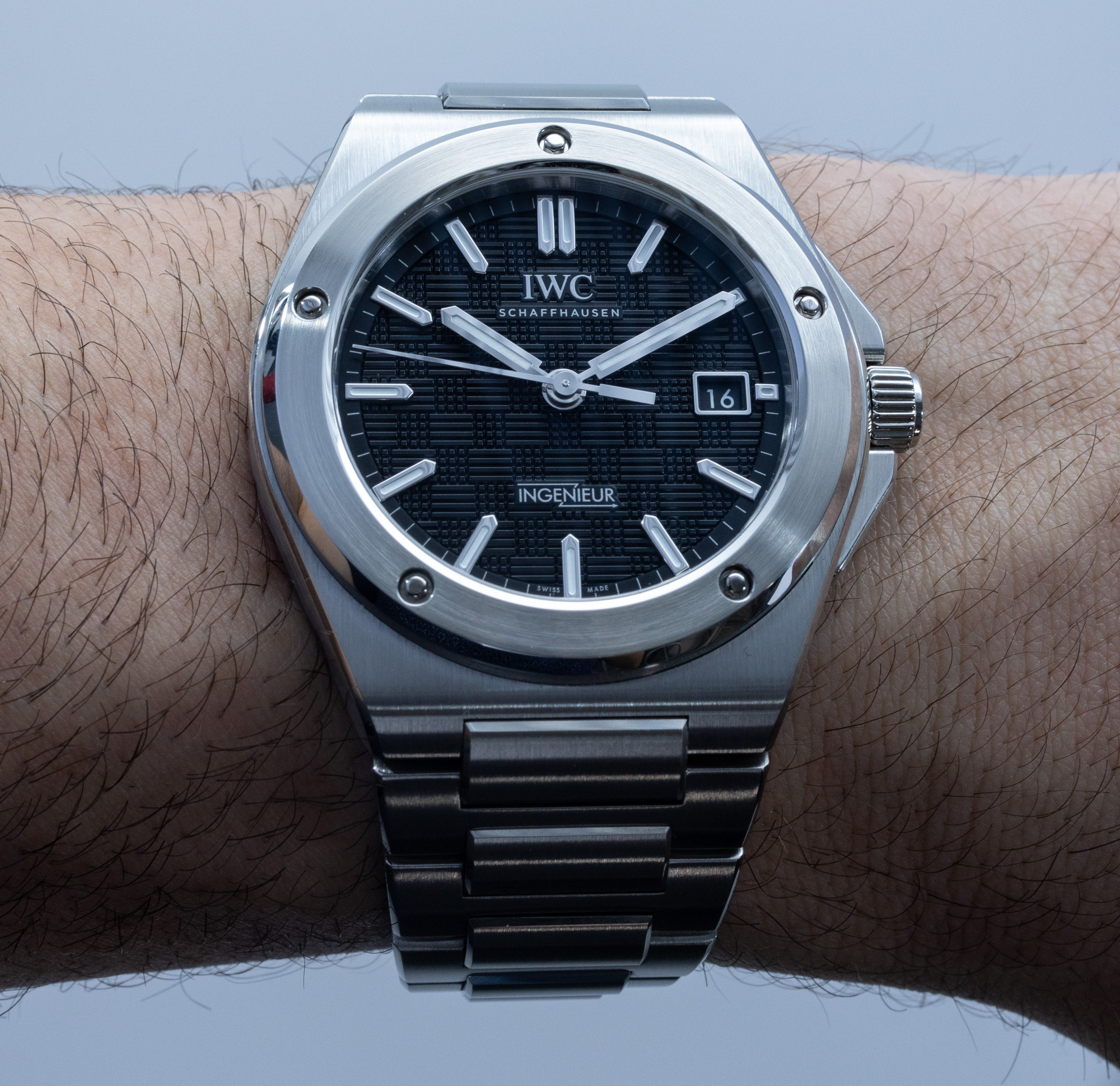
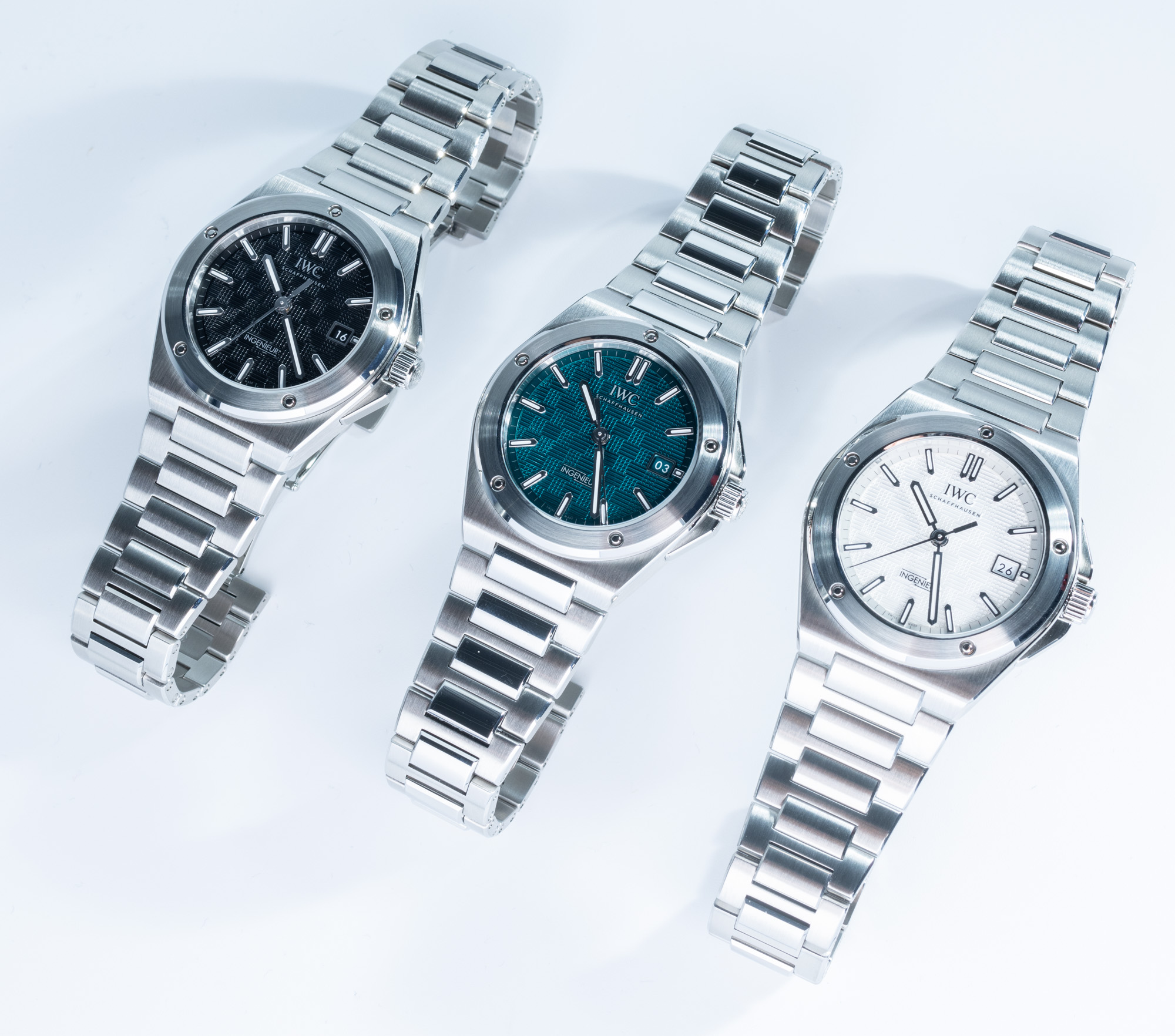
What makes this new collection of Ingenieur watches different is the high level of refinement, plain and simple. The first few generations of Genta’s Ingenieur often had strange proportions or would otherwise not meet today’s wristwatch standards. They were nice watches, for sure, but IWC never seemed to hit the mark on exactly how to execute the design and proportions. In more recent years, the Ingenieur was increased in size and became IWC’s answer to the Audemars Piguet Royal Oak Offshore. That did well for a while until the large, bold, high-luxury sports watch market became oversaturated. Then, around 2013, IWC released what is the most recent ancestor of Genta’s Ingenieur, which was also nice but still a bit large; it wasn’t exactly what the market wanted at the time. Things are very different in 2023 when sensibly sized everyday luxury watches like this are all the rage. Does IWC’s latest Ingenieur effort finally hit its mark? Many would say “absolutely,” and it would not have happened if IWC had not experienced a shift in management thinking over the last few years.
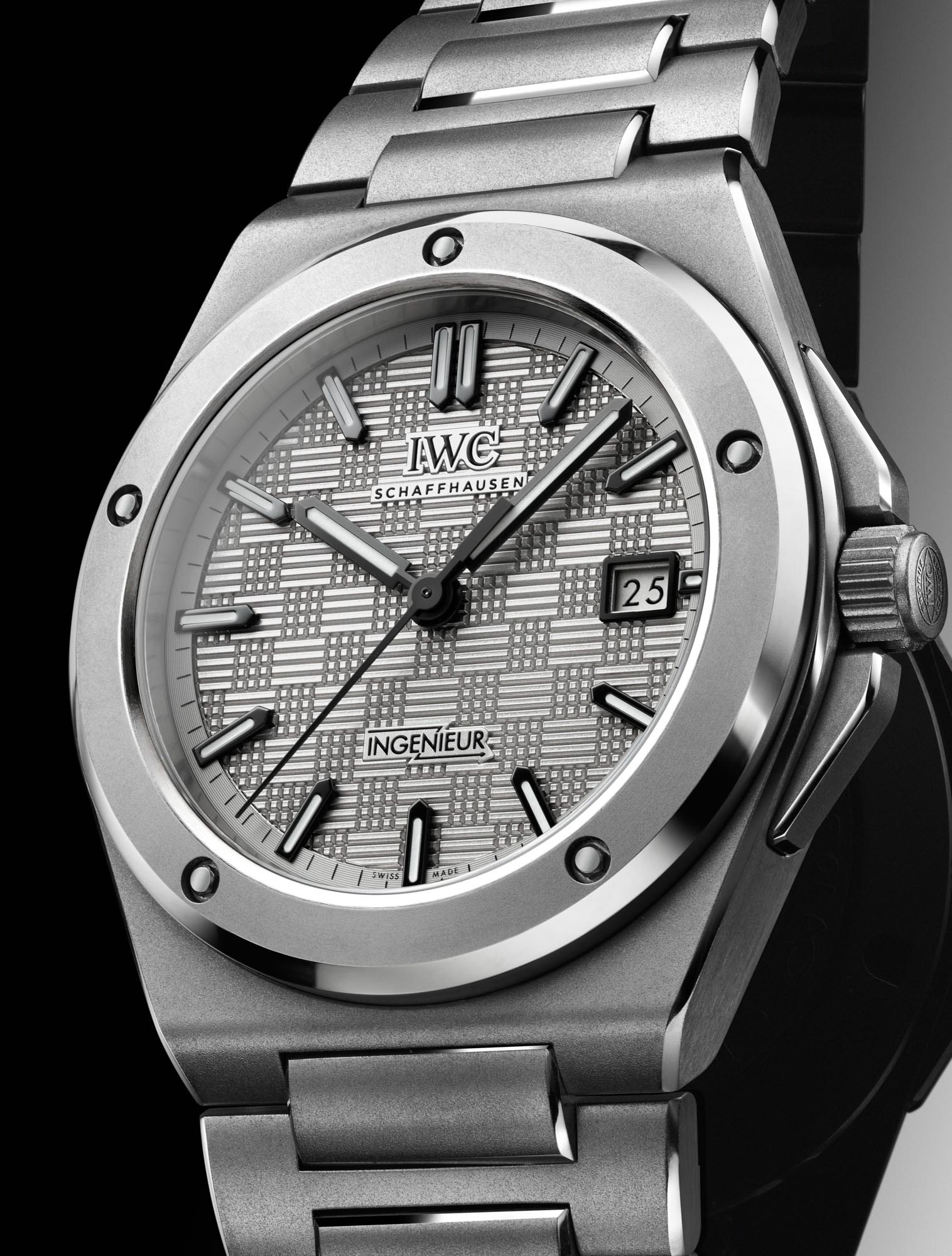
What IWC should be most credited with in the 2023 Ingenieur Automatic 40 is finally getting the classic Gerald Genta design done right. IWC’s in-house team carefully examined hundreds of variations of the watches and created dozens and dozens of prototypes over several years before this current-generation model was ready. The goal was to capture the essence of the original design but in a 40mm-wide package that wore boldly enough but was not too large as to alienate wearers. The resulting case size for the Ingenieur Automatic 40 is 40mm-wide, 10.8mm-thick, and 45.7mm lug-to-lug. What you get is a perfect amalgamation of early-generation Ingenieur SL-inspired models in a modern timepiece that does the original Gerald Genta design a lot of justice. Gerald Genta’s widow Evelyne (who managed business with him) was there in London for the Ingenieur Automatic 40 launch event and lauded the design of this new classic.
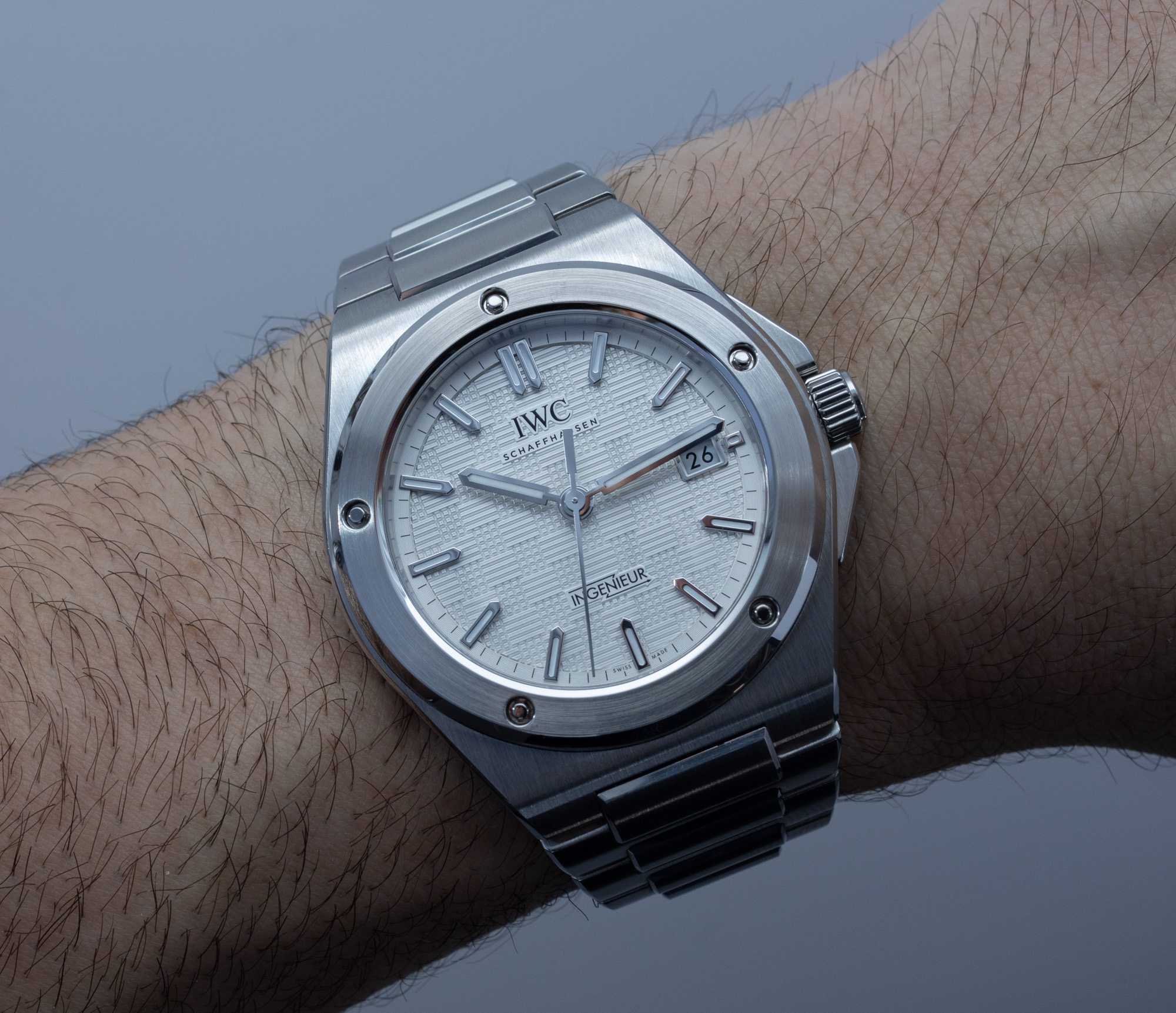
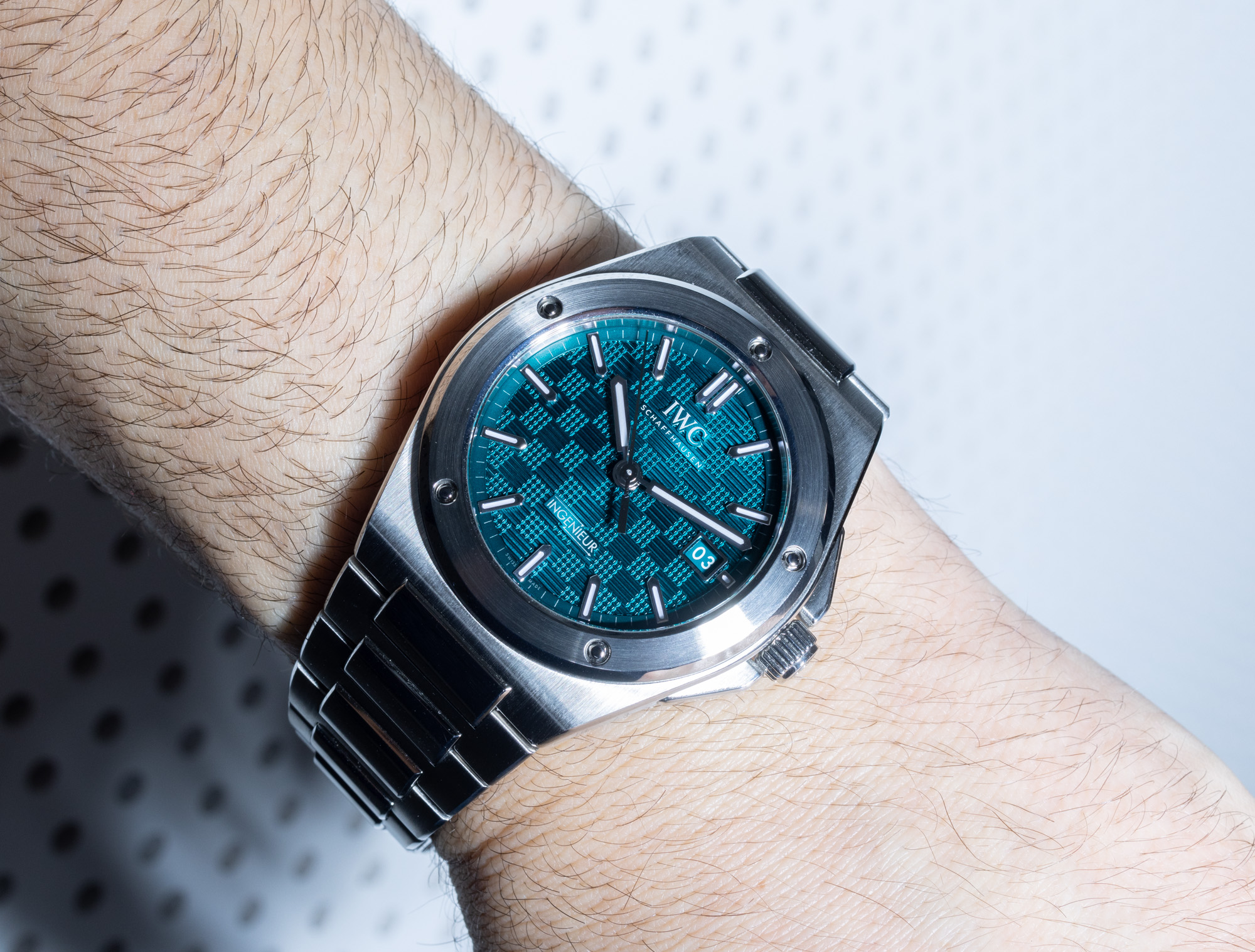
Like the original Ingenieur watches, the modern-generation models are equipped with soft iron cores in order to prevent magnetism. The cases are also water-resistant to 100 meters and capped with flat AR-coated sapphire crystals. IWC put a lot of effort into making the dial exciting by also creating an updated version of the checkerboard dial pattern from some of the originals. For early 2023, IWC introduces three dial colors of the steel Ingenieur Automatic 40, including the reference IW328901 with a black dial, the IW328902 with a silver dial, and the IW328903 with an “aqua” dial. The latter model is the showiest, but it is known that IWC tends to do best with conservative colors and designs, which is why the silver and black dials are very important. I think it is safe to say that we will be seeing a host of different color variations in the Ingeniuer Automatic 40 watch family.
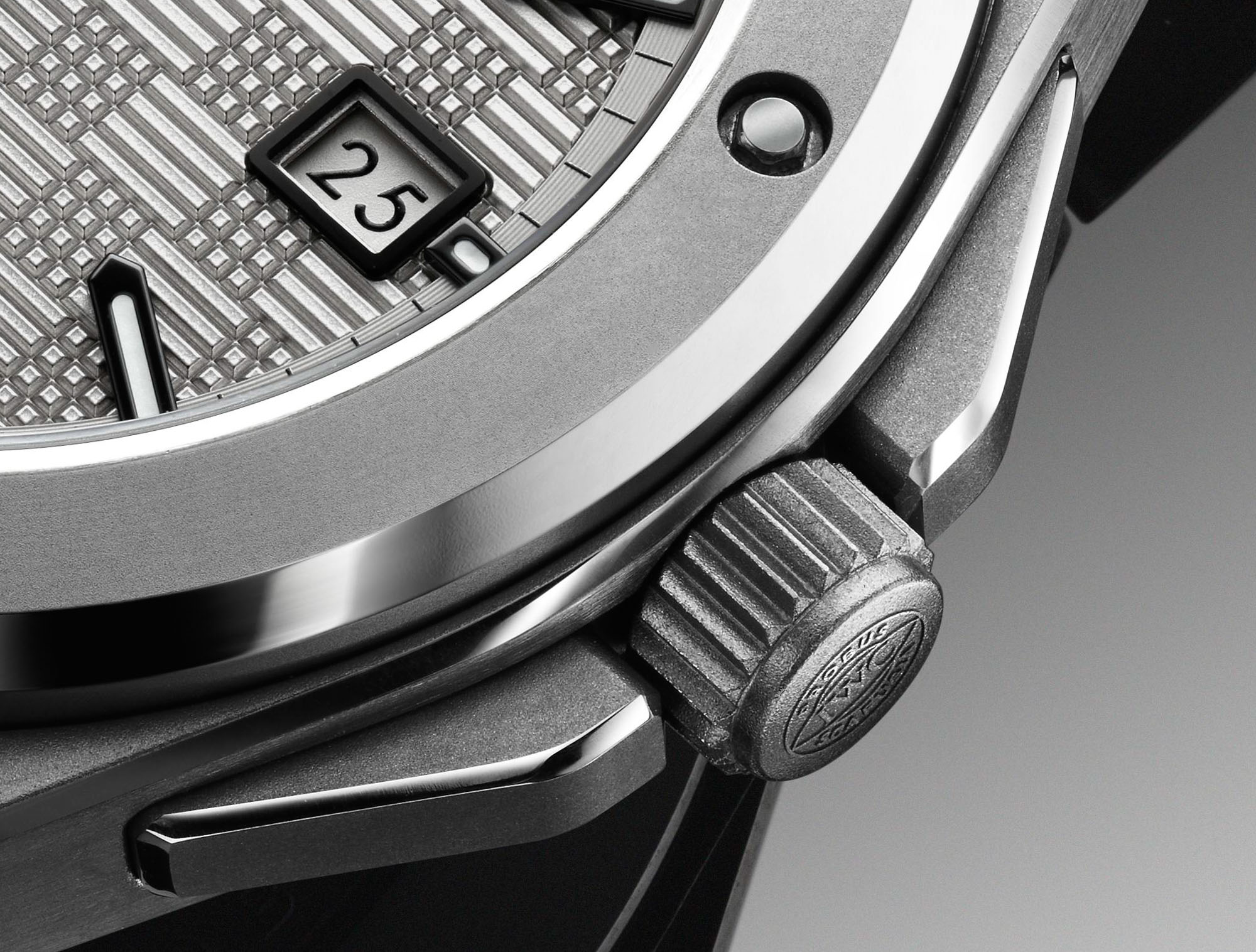
Case construction is very good, and IWC has put a lot of effort into making sure that finishes and surfaces are correct. The case and bracelet require a lot of edge-beveling and polishing, which looks great. What I like on the bracelet is that not all of the polished surfaces are flat. The rounded polished surfaces give the watch a welcome retro vibe that I think fans will appreciate. The bracelet is very much IWC in construction when it comes to how the links connect, but it has a relatively simple butterfly-style deployment. This is actually my single criticism of the watch: More effort could have been put into the deployment to make it feel unique. More specifically, I think it would have been a real treat for IWC to engineer a micro-adjust system for the bracelet. It has this feature on other (less expensive) watches with bracelet options, and I think it would have given the Ingenieur Automatic 40 a serious competitive advantage over competitor watches (which generally do not have micro-adjustment systems in the bracelet clasps). This is a small point, but I think in such a crowded market, IWC would have been wise to give its entry into this arena a few more technical (versus narrative) advantages when compared to the competition.
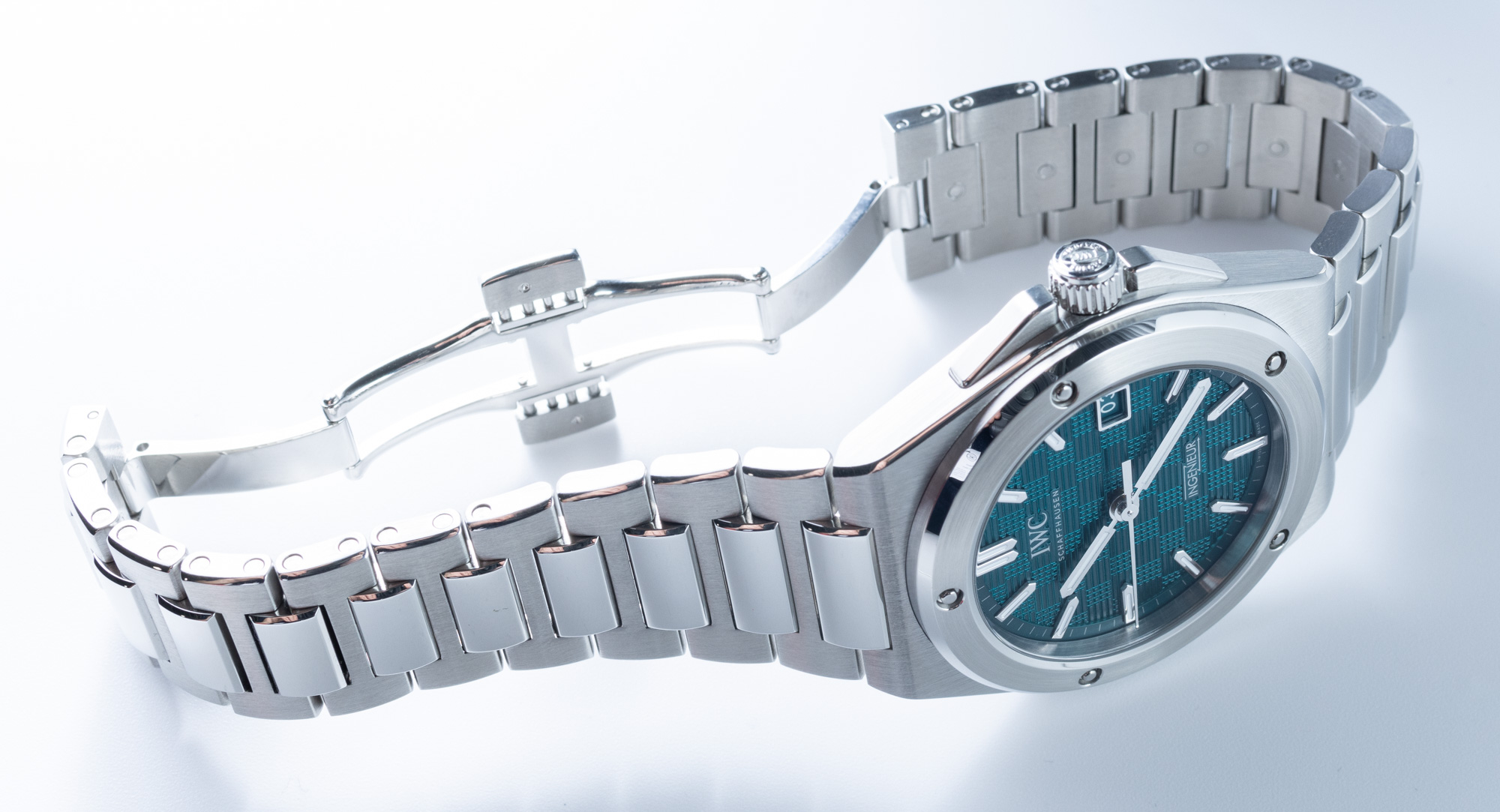
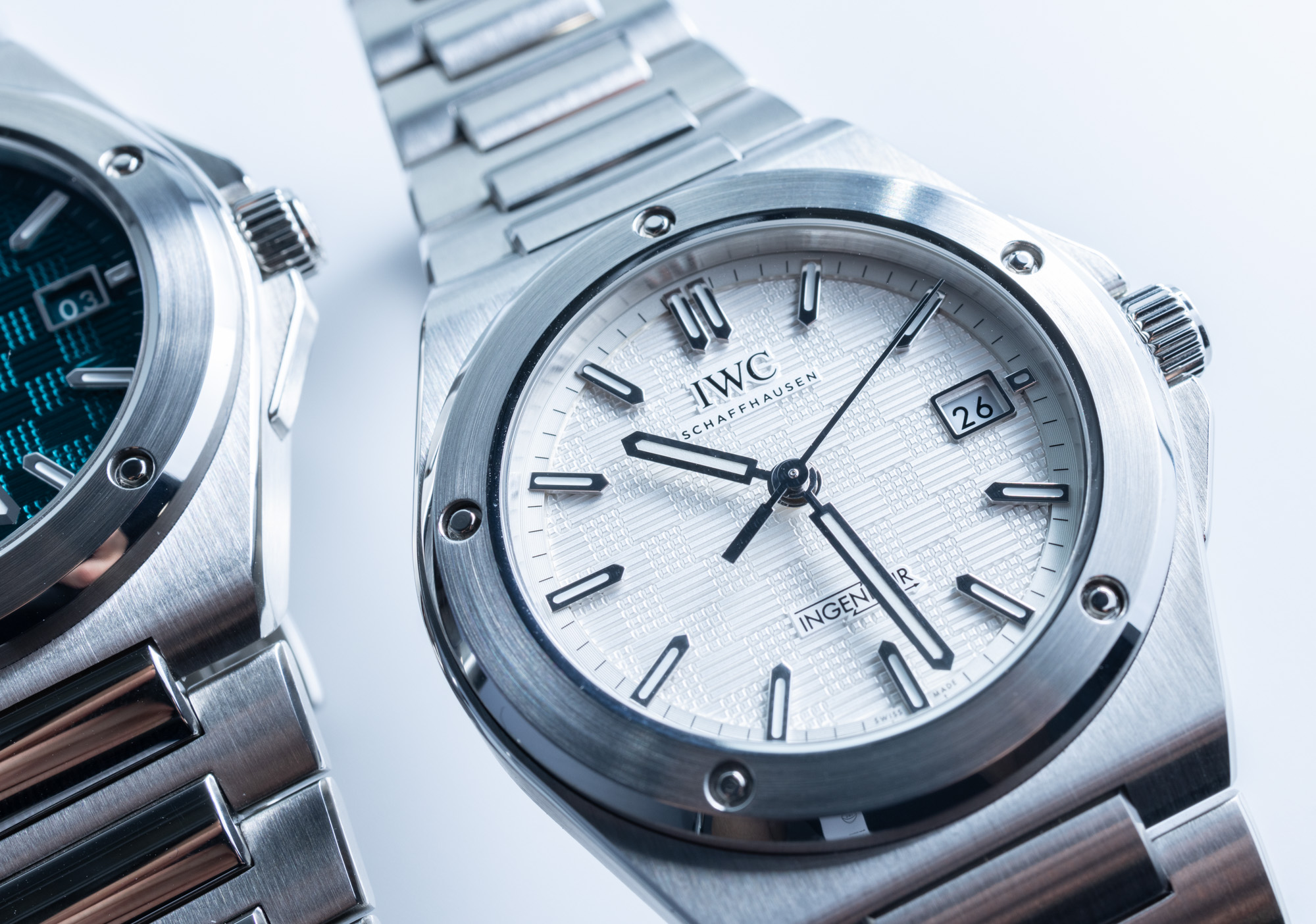
Inside this new generation Ingenieur watches is an in-house IWC automatic movement. The IWC caliber 32111 automatic movement operates at 4Hz with 120 hours of power reserve and has a bi-directional pawl winding system. The movement itself has no latent anti-magnetic properties, as far as I know, and, as stated above, IWC relies on a soft iron core for the anti-magnetism. Side note: IWC uses a small lightning bolt graphic on the caseback in order to identify the watch as being anti-magnetic. While this solution for anti-magnetism continues to be technically sound, it is also quite retro at this point given the proliferation of non-magnetic materials, which can be used in watch movements. Omega (a natural IWC competitor) has movements that themselves are more or less entirely a-magnetic, and at similar price points. IWC has always been a brand that emphasizes technical virtues in its timepieces, and I think it would have been logical for it to create the Ingenieur Automatic 40 with a more contemporary approach to anti-magnetism. It did take the brand over five years to get the case and bracelet right; it also could have used the same time to develop a version of its movement with anti-magnetic parts. Perhaps in the future.
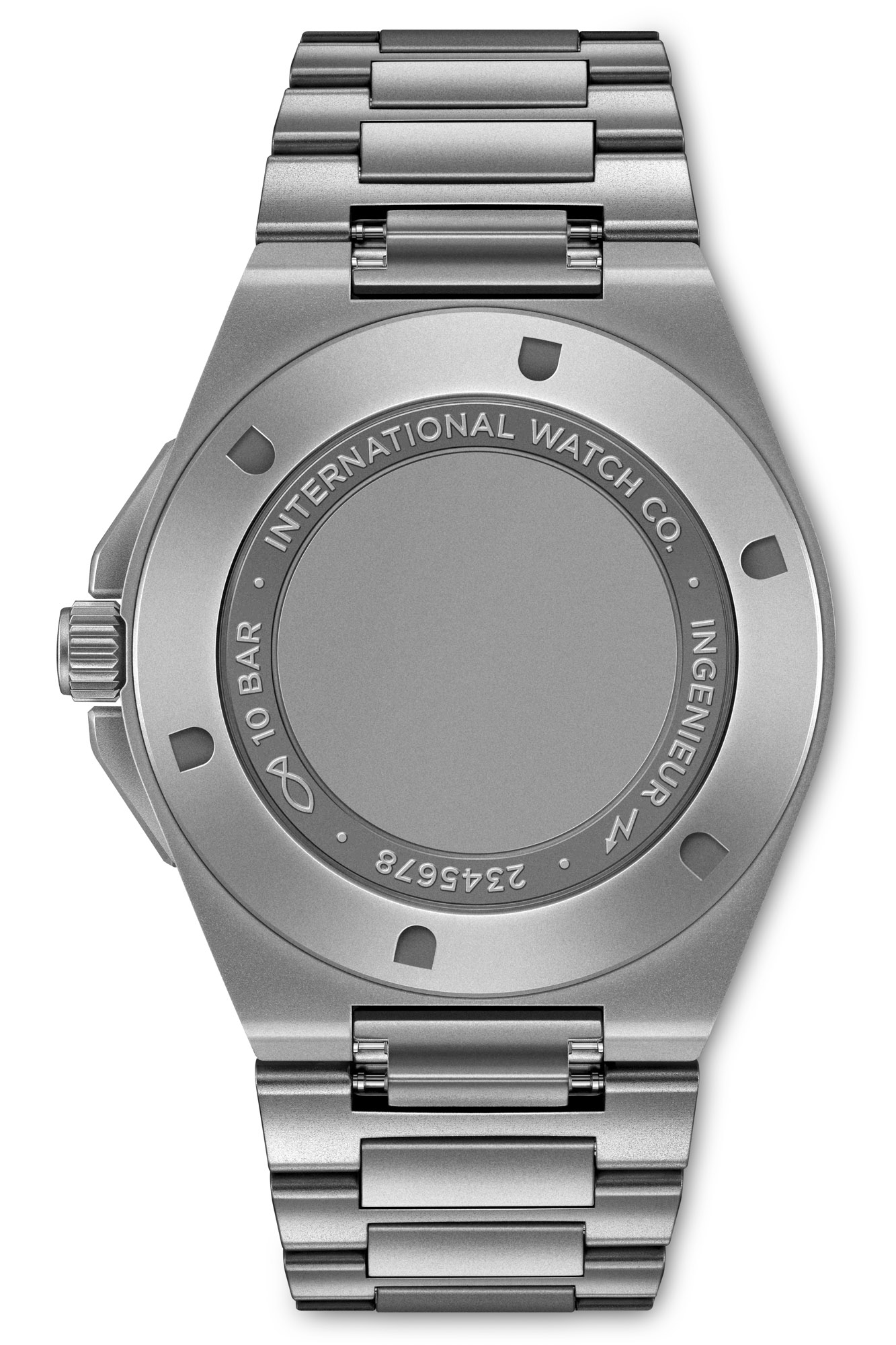
The caseback of the watch is on the simpler side, and I would have liked to see some decoration or engraved art here. Even if IWC didn’t want to put a graphic image, it could have engraved a texture similar to that on the watch dial. Indeed, this is meant to be a watch for engineers and scientists, but it is also a luxury item and both of these classifications of wearers also like a bit of pizazz in their fine goods. To me, these are all relatively minor points and things that IWC can experiment with changing in upcoming versions of the Ingenieur Automatic 40, which is destined to have a long lifespan in the current watchmaking company.
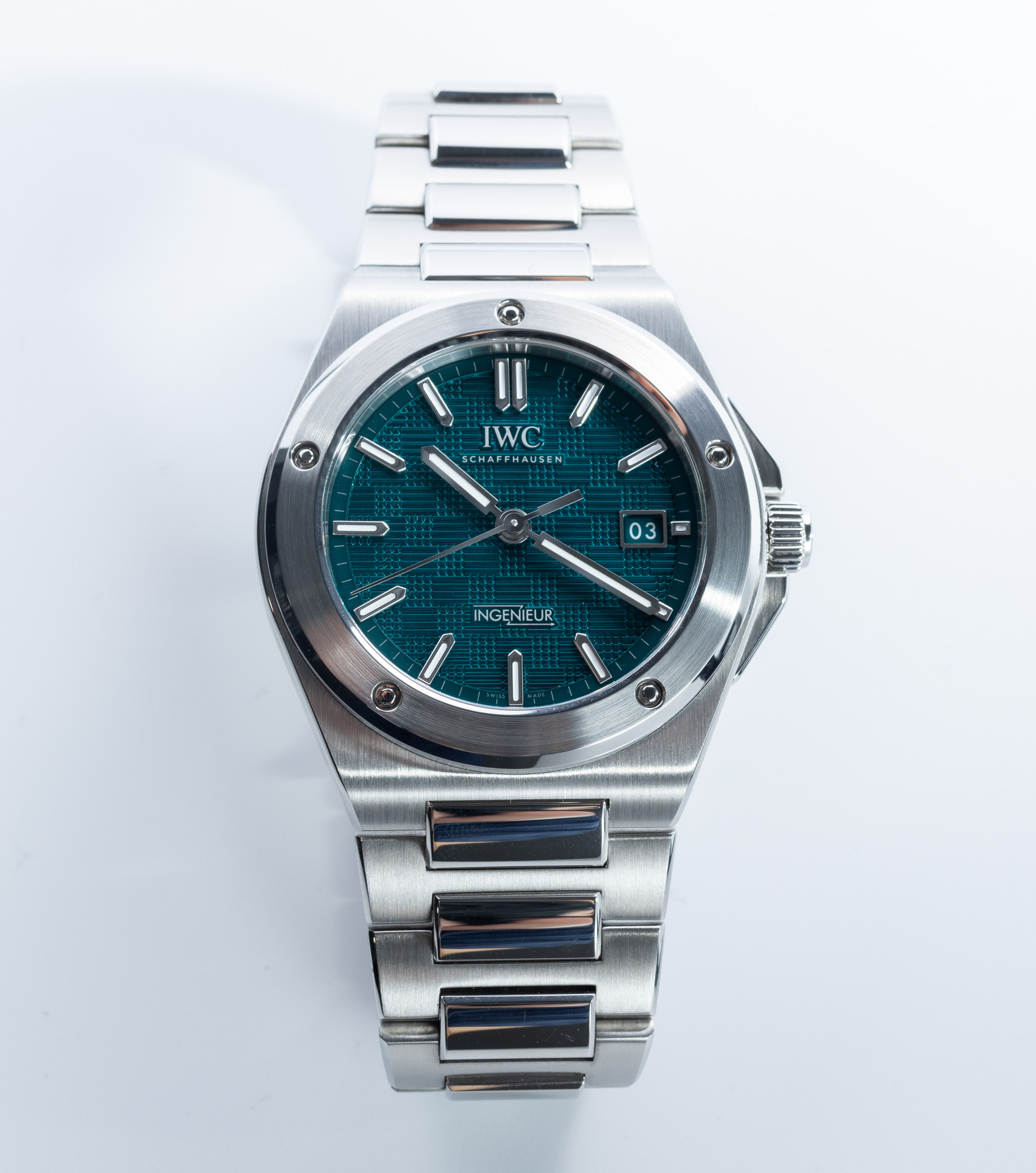
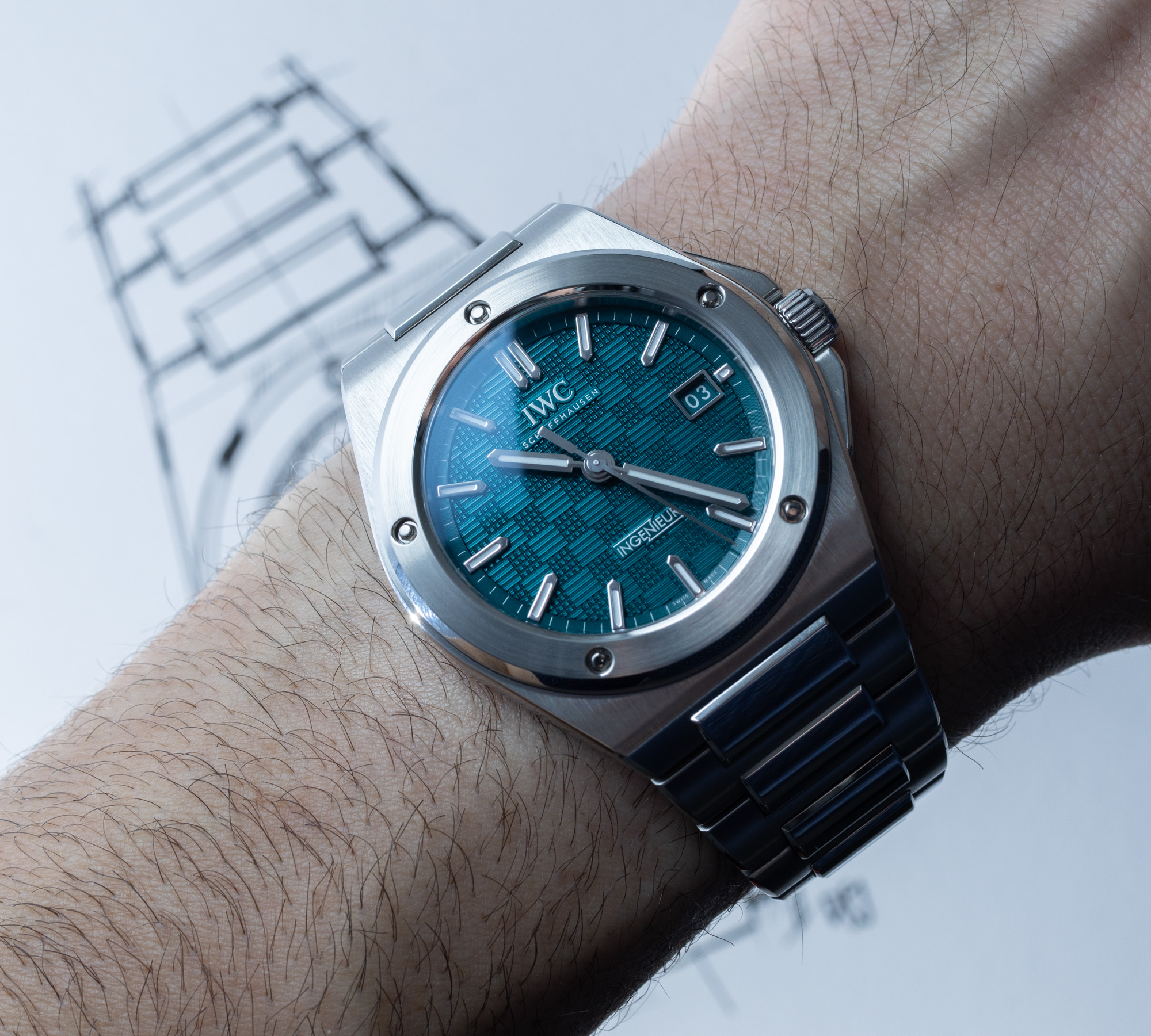
Stepping out a bit and looking at the larger context of the IWC brand in 2023, what we see is a company that looks more like the historic IWC than the showy sports watchmaker of recent history. Leader and CEO Chris Grainger is an obsessively detail-oriented designer and constructor. He has transformed IWC into a company whose mission is to make a better version of itself (inspired by its authentic past), rather than an all-purpose luxury brand that leverages pop culture and trends to remain relevant. That is excellent news for true IWC fans and timepiece enthusiasts who want to purchase a watch from a company that puts products first. IWC today is astutely competent and settling into a new rhythm and focus that feels both natural and welcome. The Ingenieur family is back and here to stay in a way that is better than ever before. Mr. Grainger and his larger team including IWC Chief Design Officer Christian Knoop accomplished the very difficult task of making “the Ingenieur that always should have been.” It will take a few years for collectors around the world to put these timepieces on their wrists, but I think there will be near-universal appreciation for what IWC has accomplished in bringing back this Gerald Genta classic (in a better way than it has ever been executed before).
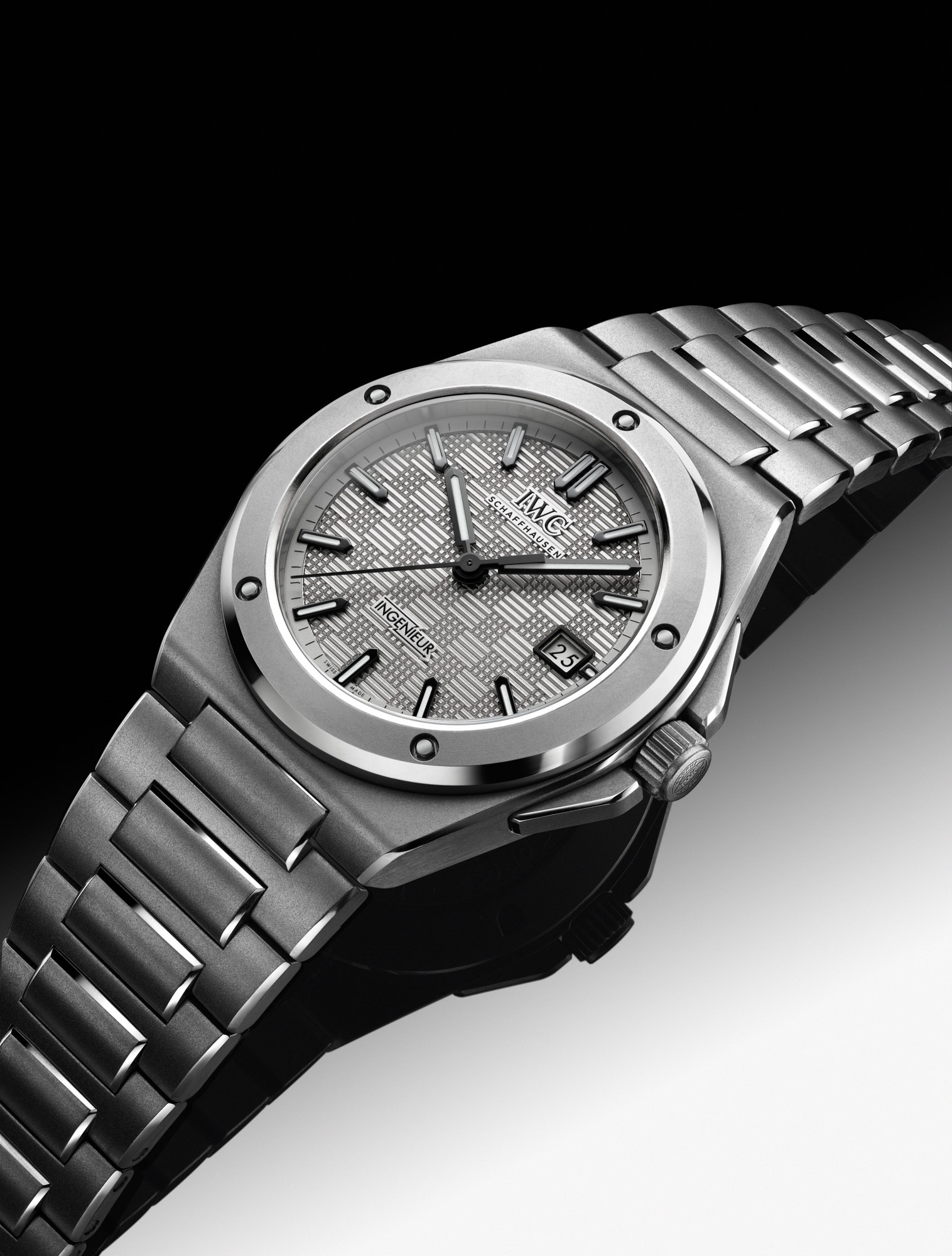
Later in 2023, even more versions of the Ingenieur Automatic 40 watches will be released by IWC, including more dial colors and material choices. That said, IWC has made it clear that production of Ingenieur watches would be limited, as they have no desire to flood the market. The debut models again are the Ingenieur reference IW328901 with a black dial, the IW328902 with a silver dial, and the IW328903 with the aquamarine dial. Price for each is $11,700 USD in steel and the reference IW328904 in titanium is $14,600 USD. Learn more at the IWC watches website here.

